|
I've been making interactive artwork for the past couple of months (and about 18 years before that). Interactive artwork sounds a little highbrow, but in fact, it's just like a turnstyle, or a book, or a shoe: it's something you are meant to engage with in a physical or experiential way, rather than simply look at. My books are interactive art projects, in that you pick up, flip through, and experience the object to experience the work. Which is the idea. I never set out to make this kind of work, but I like it because it's a playful way to attempt to embody an idea. It's different than installation art because an installation isn't necessarily something for you to touch (but something that can be a whole room or environment). It's not like sculptures or paintings I make either, because those are also not for touching. I sometimes make interactive projects, like some of the work in the upcoming show Energy Transfer at the Ann Arbor Art Center, because I like things to be activated, energized, and as simple in concept as I can make them. One project in this show invites you to place an object, in this case stickers, on a surface, as you have certain specific and familiar experiences, like seeing something pass by out the window. Another project invites you to imbue a mundane activity, like putting away a dish, with a specific intention, like sending someone love. In a way, all objects around us are there to be picked up, interacted with, related to in a particular way, much like all the objects in the video game Mindcraft are tools, or implements, for your use. In another way, everything is a little like an icon on a screen, also there for you to engage, like a light-switch in a dream. I've been playing with 'things' in this way for about eighteen years, and slowly the methods get simpler. The only way I can really know if something is working is to try it out, and then refine it over time. By trying it out, I mean sharing it. Because unlike objects, you are more than an object, dynamic and mysterious, and by sharing my work with you, my work comes alive and yields insight. So you are the magic ingredient in my work, showing me where there's life in something, (even if you are not loving the work it might be so), and where I will keep digging. I studied art and philosophy (religious studies but same thing really) at Brown, and in a way the conceptual and interactive projects are a form of embodied philosophy. An experiential way to share, versus making you read a paper. But here you are reading so - hah! The exhibition has four artists and all of the work is interaction or installation. There will be shimmying plants and spinning tip ties, helmets and a pile of things unearthed from the basement. It will be the first of many interesting shows at the center this year, and it is up until Feb 27. Come by and try some sacred dish shuffling, lift weights with bags of sugar, and see what it's like. Further details on the show: Energy Transfer Up through Feb 27. Talk at 11 am Sunday Feb 19. 117 Main Street, Ann Arbor MI 48104 (734) 994-8004 Some related projects on my website: Visual Traces of Groups at Work Attendant Empty Full You Are Legend
0 Comments
My studio journal is a key object in that I use it to function. I sit and I keep track of these very nebulous ideas and threads in my thinking, pin them down, ask questions about them, and come up with small actions to take around them, to develop an idea further. The studio journal is sometimes a place where I take stock, or make lists of things I want to do, or where I ask questions and later answer them, or where I take notes on technical processes. They are a jumble of a lot of things, but what they don't include is personal life anecdotes or complaints. I have a separate journal for that. The studio journals become important documents to me because they include important moments of epiphany and revelation, including formulas for how to repeat a successful process I developed, and what if questions like 'what if I tried this...?' . These questions can lead to a whole new body of work. The other way that my studio journal becomes valuable, is that when I come into the studio it's like a touchstone, a place I begin. I can open that journal and sit with a cup of tea, just read a few pages and immediately see where I was last time I was there, where I was, what I was thinking about. The studio journal is the essential thread that weaves through my creative work. Some of my work is very idea based and so when I'm writing statements and descriptions emerge, or an email emerges that I'm trying to articulate as a question or thought. Some of what's in there is simply visual observations like "that needs more red in the upper right corner." For a while I discovered that having sticky notes was also helpful so that when I sat to respond to a particular painting or drawing I could make a note and put it right on the back or front of a piece and then know exactly what to do next with it. It's a similar thread to the journal that makes it easier to re engage later when otherwise I would walk in a just see a complete mess and feel demoralized or lost. For some reason in an art studio, there are existential moments when it can be hard to know what I was so excited about the day before, and to feel like nothing of import is happening anywhere, even if you're surrounded by evidence of projects, industry and activity. Having little notes to myself, little recorded thoughts, questions and ideas gives me something I can plug into -it's a little like passing a baton to myself day after day in an insane relay made for one. Do you have something like a studio journal in your process? I find that mine is simple and plain, nothing too fancy or elegant. What about for you? Every time I make a book I make a series of works as a part of that project. For several years now, I am confounded about what to do with the artworks for each of my artist books. What do you think I should do with each of these collections? The collections of artwork are -A series of drawings from my first book Contemporary Prayers to Whatever Works. The above image is one example of fifty. -A series of small bits and artifacts from my second book Help me [ ], do the thing. 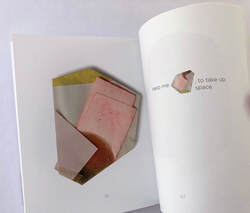 -A series of drawings from the 2021 edition of Contemporary Prayers to Whatever Works -A series of drawings from the Elements: a love letter to all things everywhere. and finally
I have these 'Lots' of Collection of really valuable things and I keep them really safe, but I can't decide what to do with them. I am open to selling them, I could auction them in some way, ideas please!?!?!? Thanks! Happy thanksgiving, and leave all ideas below please!! I wanted to share a little bit about woodworking with you. When I built my studio we made a decision to take the front ten feet of the garage and turn it into a wood shop. This makes for a rather inelegant entryway, but fulfills the need for me to have a place to put the chop saw that I've dragged around for twelve years, and usually just stepped over on the floor. Sawdust makes it really tricky to work in a studio if you paint or have any other tacky surface around. My wood shop is fairly simple and thrills me to no end. There's a drill press that I inherited from my father-in-law Gerald Marshall, there's the aforementioned chop saw, that now gets used all the time. It sits on a metal folding table that someone gave us while we were walking by their house one afternoon. I installed these orange wood racks which somehow make it all official. Even though wood sometimes falls on me in a cascade, I'm grateful that it's relatively organized up there. I use a wood shop as an artist to build various supports and structural bases, and I use it a lot in my home life as well. I've done a whole lot of projects, not the least of which was the studio build itself. The studs for the walls all got cut here and when we were building the space; then, the whole space itself was the wood shop. Next up is to build some kind of a shed so that I don't have to tiptoe around a lawnmower and two bikes and all of the gardening and grill stuff that fills about a quarter of the wood working space. I wear the glasses (in the photo above), also my father in laws, when I'm working with power tools. I really love them. They're probably 50 or 60 years old. They have no prescription in them. For me they create a sense of continuity with my elders. Also in the wood shop are many of my father's tools and my father-in-law's tools. Because my grandfather and father were both woodworkers professionally I feel a deep connection to them both. My father-in-law was an optical physicist and for quite a lot of his life worked as a consultant. Like me he had many creative aspects of the work he did as a self employed person. Both when my father passed away and when my in-laws downsized to a retirement home, we inherited many tools. When I go up to Maine every year, I often add some strange gem at the Liberty Tool Company to my collection like a graphite line scorer or more clamps. I love to pick through the stuff in their creepy haunted space! The woodworking projects, most of which happened during the pandemic include many firsts in wood. I learned a lot about myself as a woodworker in the process and continue to learn and make new things as we renovate corners of the house. I'm going to share in images a few of the projects I've completed. I'm as astonished that I made these things! Thanks for tuning in to this look at what goes on behind the scenes. PS. I don't have any plans I can share because I am a sloppy, undisciplined craftsperson. Rain Barrel Stand Porch skirting Low gateleg table Mug shelf Closet
I've been working quite vigorously on a new series that began about a decade ago with three pieces. The project is called Stand In and it's basically poems in things. In a solo exhibition opening on Saturday September 17th on the outskirts of Ann Arbor, I will share several new pieces in this series, along with two other brand new, related bodies of work - puffy paintings and peg drawings. What I'm sharing here is a little peek at a few Stand In sculptures. At the opening from 4-6:30, Suite 1, 7885 Jackson Road, Ann Arbor MI Sat. Sept 17, I will also be raffling off one copy of NOWISH, the 2023 Calendar that I make a very small edition of valued at $50...so come with your lucky rabbits foot! Each sculpture has three component parts: the base structure, assembled objects, and a legend, like the legend on a map. This legend translates between static objects and lived experience that never stops moving. Here's the Project Statement. These conceptual, sculptural works are found object assemblages used to express ineffable, personal experiences. Sometimes, the experiences mapped through these objects are poignant and moving; sometimes they are awkward and difficult, and or hard to recollect at all. Fleeting occurances like a wink, the last visit with someone, or an interaction, are broken down into its aspects, and paired to each object. In a sense this work is about presence: the presence in objects, and the way presence opens up and closes down in the course of living a life, or the movement through a day. I made this series after witnessing humans in that experience of being separated from their things. It's for me both an exploration of the lives of things, their histories as companions in our homes, and their fate in junk shops and land fills. This human inevitability of parting with what we care for and hold closest, as well as my own fascination with all the 'stuff.' I'm interested in the inside/outside delineation in human experience, what we don't know of another's life, and what's laid open to be seen. Also, what we often can't fully register - those moments - as they happen in our own. These works, presented via garlands, shelves and spindles, generally are under two feet in their largest dimensions. Larger site specific, temporary versions are also in development and I welcome invitations to collaborate with a space and one's 'things.' The work is both the sculptural assemblage and the legend that accompanies it. This project first began in 2014, and continues today. As a side note I've noticed that labels and legends are an integral part of several of my projects. These include the projects Offering Shelf and Fresh Eyes and Attendant. Stand Ins between words and forms also happens in all three books of prayer. This may sound complicated but it's in fact fairly simple. It's a little like reading the book Goodnight Moon in that it's about pattern recognition and the ridiculousness of a cluster of strange objects. I'm noticing as I make these new pieces that there are certain things that are being illuminated in the poems, and certain things being illuminated in the objects. I'll share some of the themes here. In the poems, what's being described are the things that we tend to miss because they are hard to pin down. Things that are either so mundane that we don't even really register them: Like the times we're alone in between events. It's easy to not even be conscious of that happening at all. Or the times when we have an awkward situation with another person, or an intimate moment that's either welcome one or unwelcome, with a stranger or with someone we love. Also, those moments that are big, poignant and memorable, as well as tender, vulnerable and fleeting, are represented in specific pieces in this series. The objects also have themes in them as well: they are domestic and often incongruous with one another. They invoke for me a kind of play, a balance, and a kind of jumble. The color palette, texture and overall form of them are composed with a lot of consideration. I may propose a residency with one of the junk shops because I'm there so often and I'm also kind of curious what exactly I'm doing there. What I find I'm doing is sifting through the evidence of other people's lives and the visible way in which a place like that holds evidence of lives that have either been interrupted by events or where a decision was made to declutter and clear out. Some of the objects that I'm selecting were parts of unfinished craft projects or perhaps were part of a life from another era. Our lives are so full of things. This is stuff we can't take with us when we die or when we go through transitions that we didn't ask for. These pieces are a way to both honor those objects and the quiet little relationships others have had with them in a home: to translate them with what's going on really behind them and through them. I've heard it said that Matter is a way of seeing, not something that is seen. I've also sat with the interesting idea that Objects are something to think with. The first comes from a non dual philosopher Rupert Spira, and the second comes from Seymour Papert, a child psychologist who invented logo programming for children. Both of these individuals share a certain brilliance, and I think this work is an expression of both of these ideas. Seeing this all as metaphor for something else: Isn't that in some ways what life really is? To put it differently, if this is your dream, isn't everything in a dream a metaphor standing in for something else. If you are local, come to the opening and try your luck at the raffle! We're a small operation, so it'll be good odds in your favor! And if you want to reserve your calendar - or for any other reason - drop me a line or leave a comment below. The gallery will be open by appointment , and for events on October 8 3-6, and for the closing on Oct 22. Masks are strongly encouraged and please do not join us if you are sick. Here's a bulletin style update on the pink tub! I first wrote about the Pink Tub in studio objects, and since then the pink tub has had a change because well, it began to smell really bad. It might have been when I threw some tea in there and so there was more biological matter than just pigment and water. When things started to smell skunky I put it outside, and put some boards and a big rock on it. Now it's just to the left of my side door of the studio, it doesn't smell anymore as far as I can tell. I put the boards there so that creatures wouldn't get in and drink anything, but left openings for evaporation.
The idea of the pink tub is that it keeps the watershed clean by not pouring anything down the drain and it evaporates over time by being outside. I want to point out that I like that it looks really more like a Japanese thing now. Do you see it? Anyway, that's all. The pouring mechanism isn't in my studio directly so it's a little cumbersome, but it keeps the airwaves clean and the actual skunks in our yard guessing. This was an eight dollar junk shop find and I'm thrilled to lay it down on my $40 rug in my studio. It's most lovely when I've decided to sit in front of the wood stove like in this photo: I just love the scale of it and the color of it and you can probably see why I like it based on looking at any of my artwork. And it was only eight dollars!
Yes, there will come a time when I have to start removing more and more stuff from my studio to get through it, this alway happens right? Or it does often for me. For now it adds a cozy element, it gives me another height for sitting at, and it can also be for my feet. It's really important to me to have some comfort in the studio, so that I can sit with my tea and think and write and not feel like my creative space is only for a certain kind of hard productivity. I need a counter balance to the standing laptop station and I am grateful to have these soft elements to hold the more tender parts of the practice. Is there something you quietly rely on to bring a little tenderness to your work and focus? I would love to know. Leave a comment below. xo HB *Photo Credit: Abby Rose. I want to share about a long ago dream turned actual: a functional, bondafide studio closet. In my nomadic years, between 2007 and 2010 when I moved my studio four times, I had a lot of opportunities to think about what did and didn’t work in a studio situation. ** One of them was tripping over my chop saw which lived on the floor, and covered everything with sawdust when I used it, and storing all my boxes, finished materials and supplies in plain sight. It worked well eough, and I loved the place I worked more than anywhere in the world, but dared I to dream, the first thing was a closet: a discreet place with a modicum of order, good shelving that I couldn’t see and didn’t have to drape sheets over when I opened my studio. My friend Tracey Easthope here in Ann Arbor, with her husband John DeHoog, came over and advised on the design. They helped us figure out exactly how this might work in the raw space we turned into my studio in the summer and fall of 2020. Their idea was a partial wall, blocking off one window with no formal door. At first it looked like this. And then like this. And then like this when my friend Patrick and I put in the flooring. Here's the cieling. PS Guy wired the whole place for electricity. The closet has its own electric and light. Finally, and momentarily, it was this gorgeous potential space. I made some shelf brackets with our friend Thom’s borrowed jig, and then put up wood we’d brought with us that was sitting out in the weather in the yard of our last rental, for the shelves. And here’s what it looks like full! Actually, its way messier than this, but this was what it first looked like, all organized and full, a year ago. Now of course, I can barely step into it, but at least I can't see it without rounding a corner! Yes. All things tend toward entropy, especially if a) I am involved, b) it’s an art studio and you make stuff in more than one medium and more than two dimensions. There’s another critical few features to this closet.
**Some examples of bad studio situations include: -finding a bag of meth on the side of the shared bathroom sink...hmmm -a stairwell that was blocked off and blacked out sucking energy into the black hole that it created around the corner from where I was working -a leaking roof -sudden evictions -ghostly visitations -nowhere to park -no privacy -toxic air… These drawings are new as of spring 2021, although I have been sketching these out for about six years. I brought the materials to begin them from Boston when I moved in 2017, when I was thinking about innovative displays, and then there was so much moving around and upheaval that it didn't come back up to work with until I was back in a permanent studio and able to relax a little. The peg drawings are occurring in tandem with the Puffies, and with the Stand In project, another sculptural variation. I was really delighted when I first discovered that the paintings and these sculptural wall pieces worked so delightfully in tandem. In other words they really talk to each other! The peg drawing series is one kind of work that feature things with holes in them, a theme in my creative process that I recently wrote about. These Peg pieces consist of a wooden peg or pegs affixed securely to the wall, and then reinforced two dimensional-ish forms that hang from them, including materials such as card stock, book board, cardboard, painted, dipped in plaster and paint, found and sometimes folded. Some of these objects are single, beautiful fragments that I have loved and held on to for years, a patterned discarded paper scrap then dipped in a thick paint, or paper that's been dyed, dipped, scored. These are arranged in a specific compositions, and simply hang in small divots on the horizontal peg in a given order. When you purchase a peg drawing you get instructions on how and where to best install the work, the hardware and the peg. The work can be presented as this simple ephemera, or you can have the work framed in a deeper box if you have a very windy or high traffic kind of spot in mind for the piece. Making this kind of work is all about textures, color therapy in its own right, problem solving, constant pairing, stepping back to asses, and composition. My favorite part in problem solving was finding as many things with holes in them, and as many ways to make a hole, as I could, trying out all the processes, then refining and refining until I was clear on what I was delighted with, interested in, and what made a piece shine. So far I have exhibited the pegs as part of the 'Incomplete' exhibition at the Scarab Club in Detroit MI, and again at the 'Art for Right Now' exhibition at B Gallery in Castine ME. An exhibition at TrustArt will also include several peg drawings later in 2022. I'll keep you posted! Here's are some more examples. I welcome any questions, thoughts or comments and respond as soon as I see them. It adds whole new dimension to my work to share it and to hear how it bounces off others!
When I set up my studio, I put two chairs, both trash finds, and a cheap rug, right in the middle of everything. This is because I love a studio visit. I also have the kettle and cups, and a pile of books. This is so that it's easy to have someone over to visit me in the studio, to see what I'm doing and to share what they're working on, or what they are interested in in my work.
I think this is my very favorite thing - aside from being alone and making art - about art making, is that it has led to so many lovely visits, friendships, interesting insights and perspectives and collaborations. In other words, yes, relationships! So I wanted to just let you know that if you'd like to come handle a handmade End Papers book, peer around the edge of the puffy paintings, or share a cup of tea,* drop me a line! I would love to have you over and learn what drew you to connect. You are welcome. If you came to the studio, what would you like to see, ask, or talk about? If you used to come to my studio in Boston, what do you most remember about it? What did you most enjoy? Please share below in the comments, both so that others can learn, and so that I can too! * Just be clear, you could have your own cup of tea...I would provide it, but we would each get our own. ** Here's a blog post about End Papers, which used to be called Death Books. One of my favorite types of studio related errands is looking for something specific to go into a sculpture or installation, that is generally used for another purpose. It might be in a hardware store, a junk shop, a speciality store or even a drug store. What I enjoy about such an errand is that it demands a very different kind of engagement than the usual go and get some shoelaces kind of errand. Instead, it requires me to 'go wide', to stay open and to look freshly at things I see all the time. I recently went to a junk shop with the mission to find 'things with holes in them' for a new series of sculptures I'm working on. This found me digging through napkin rings, tupperware, dishware, jewelry, small appliances, gardening stuff, kids toys, general antiques and even lengths of hose. There's a book I've never read, but that my sister has always recommended I read. I like the title, and I think it does enough for me right there, The title is 'Seeing is Forgetting the Name of the Thing One Sees' by Lawrence Weschler. Essentially that's what these errands are about. At other times, this kind of searching happens online and that's not half as fun. Also, it's generally difficult to have someone in a store, especially a big box type of hardware store, help me on these errands. The conversation goes like this: Can I help you find something? Yes, I'm looking for things with holes in them. Can I ask what you're using them for? It never goes well. A new project like this gets me looking everywhere and in all situations for things with holes in them, how one can make holes of different sizes, and in what kinds of material. It's like a rabbit with her ears up and pivoting about, taking in all of the sound data around her. The ears are up and pivoting! Other projects have found me looking for wrap-able colorful things, forms of glow in the dark material, patterns for sewing orbs, materials that float and disintegrate in water, all variants of tape and specialty adhesives, colored powders with particular properties, types of smooth absorbent cottons, modular fake plants, granular materials for flocking and other people's half finished craft projects. It's rare that I actually go into an art and craft store for anything! Anyway, the last junk shop run yielded quite a haul, and I've been having fun digging through and altering my wares: pulling apart necklaces and using a step drill bit. I look forward to sharing the results! Here's a peek at some work in development. What strange errands have you been on that perhaps have altered your perspective in some way?
This ongoing series of paintings began in 2005 when I put together an exhibition for Judy Goldman on Newbury Street in Boston. It was the second show I'd had with her, she represented me for as long as her gallery was open, and it was the first time I'd made this type of painting. The exhibition had painting, drawing and small sculpture, and the palette was black, deep blue, red and green. This was the second round of pour drawings, another trope that continues in my work today. I essentially upholster the wooden supports, and then cover the surface with various types of acrylic, and in some cases, oil paint. Occasionally pencil or chalk or another type of mark. I am amazed to find that these paintings, provided they are correctly stored away from sharp corners, are incredibly durable and stable. When I first made these paintings, I tended to work in black and white, or monotone with shades of blue. Now, I often start with a white or other color like ochre, and do not tend to make paint strokes on the surface, but work with what's happening in the pour. Occasionally, I've made a very involved and busy type of puffy painting, one that has equal parts disturbed and delighted me. This one was such a one, it was delightful and at the time so different than what I was going for that it alarmed me. I remember that a friend was coming to the studio and I hid it, because I thought it was so ugly, but then I couldn't stop thinking about it. This fear of ugly is an interesting a fertile territory for me. I kept trying to 'finish' this one, until I felt I had ruined it. This happens sometimes and can be how my comfort zone gets stretched. So I essentially took it apart and then, over the weeks that followed, regretted doing so. It was a forerunner of sorts, and I have kept pieces of it, sort of like a pelt.
Here is me working on some of the newer ones, which are branching out in the base colors, patterns and fabrics beyond gray or white. Please share with me your impressions, thoughts and questions in the comments! I am always interested in which pieces speak to someone - or what kind of response is inspired. I learn so much from what happens in your worlds in relation to what is happening in mine.
I am taking a moment out of the deeper posts here, on subjects ranging from Death to No BS approaches to meditation, to a survey and narrative history of objects in my studio, to share with you that there are a few copies remaining of the calendar Especially Now - a year in 12 artworks by Hannah Burr (that's me!) AND that it is A GENEROUS SALE ON REMAINING COPIES while there are a few left! The remaining copies 4 or 5? Are $22 off, with adjusted postage to reflect the normal cost, post holiday.*
So for 2022, keep your $22, and get one of these limited edition calendars for only $33 as a gift for your new year self: color, form and inspiration changing every month plus an ever-ready answer to the question 'what day is it again?' while you're quarantining from a covid scare or just emerging into the strange light of another new year. Also, congratulate yourself for biding your time, keeping a careful eye on your budget, or plain forgetting to order your copies until now! It is your lucky day. To snag your copies, go to hannahburr.bigcartel.com and put the discount code NEWYEARNOW in at check out. While you're there at the shop, you may notice a couple of other exciting developments which I will be announcing shortly as well! *the USPS raised their holiday rates quite a bit this year and so for the holiday, rates needing bumping in the shop as well. They are now back to "normal". Enjoy and happy new year. Especially now. PS. I give 10% of my gross profits to charities through Effective Altruism, excellent organizations like WakeUp! and one tree is planted for every individual product I sell through a $1 contribution to EdenReforestation (Thank you Leila Simon Hayes for this excellent idea!) I have noticed that when meditation comes up in conversation, I often hear the phrase 'I should...' followed by some description of how someone is failing to live up to some ideal way of doing it. After meditating in a group of people where there's some kind of check-in afterward, I commonly hear descriptions of either a difficult/disappointing experience, or a lovely, special state type experience. When you're learning to do something like say, skateboard, and you go out there and try your hand at it, and come back either having wiped out, dusting yourself off, or successfully land without wiping out - what a rush! A positive, confidence building experience. I always wanted to be that guy having the rush, not the one who became increasingly aware of the intense kink in her shoulder over the course of the sit.
Meditation however, is not a performance. It's worth exploring this because otherwise, it's another thing to make us miserable. Some kinds probably are performative. But presence isn't something that you do, and this term meditation is simply about presence when all is said and done, or "This" : whatever's happening right now. Instead, it's what is never not there. You aren't doing being presence, or doing being. Like the sky, or say, noticing you have socks on, the presence of socks is not about you, they're just, well, on your feet. The sky is never not there, whatever your level of interest in, focus on, or idea about the sky may be. The other day I heard great table metaphor that may illustrate this. There's a table covered with books. Lots of books. That's you - the table - with all kinds of interesting books on it. The books are the identifiers we have - the things that when we're gone and everyone who knew us is also gone, go as well, because they are a shared thought. This includes your history, your plans, your opinions, your life story, your nationality, your preferences, how you vote, your personality, your style, your body, your chronic pains, your psychology, your turns of phrase, your reflection in the mirror, what you love and don't love about your body, your closest kin, your habits, your address, your drivers license number, your social security number, your CV and resume, your skill sets, pedigrees, your successes, your failures, your traumas, what you overcome. Your memories, others' memories of you, your reputation, your good deeds, your misdeeds, your credit score, your best moments, your bank account balance, your possessions, what you've made, what you failed to make, finish, accomplish or complete. Also, time, objects and space can go there too but that may be another conversation. When the 'books' are removed, like when you're tidying up in the living room, you find there's a table underneath them. It's always been there. It's never not been there. It's familiar to you, as it's what you have used to access and read these books, and to refer to your 'self' in the form of each of these books, these programs or information packets about yourself. You may put your feet on it or put your dinner plate on the table too. Meditation is just awareness of This, or you could say, awareness of what is the ground of experience. The big attainment is actually just - the table is here, where it's always been. How spiritual! The idea of meditation as a performance is just another book or glossy yoga type magazine on the table, with a picture of yourself perhaps, doing whatever idea of your meditation performance is. It's pretty funny and incredibly amazing how thought co opts even just This - what's happening right now. The flow of one thing after another, a live stream of you. To take the table metaphor a little further, it's not even 'your' table - with a style, with a level of wear, perfectly reflecting all the books that were on it. It turns out that everybody's books are on one table, one gigantic table, again, just a metaphor this table, but it's not actually an object, and nobody owns it, or dusts it, or made it. It's not a thing like a galaxy is a thing, or a pebble. It's just that we are built to see and talk about and interact with objects, so that's as good a metaphor as any: table. This big wide foundation or ground on which all the objects form a fleeting impression of the story of you and your life, is always here, always offering up the next thing, and is in fact, you, and me, and this word, and the sound you're hearing, and the plans for the next hour, and the irritations and concerns, and the gratitudes and questions, and the dog and the cat, the wad of tissue that didn't make it into the trash can lying on the floor, and the tree shimmering out the window. Nothing, no book, no passing object of experience, and the presence underneath, is not you. Here's a suggested way to let this sink in a little further. Cue up a song or two, get a glass of something, maybe a snack. Sit in a chair and look out the window. Five minutes we're talking. Maybe set a timer. Let the flavor of your food and drink mix with the sound of the music or the kids fighting, mix with the sight out the window, the movement, inside/outside blending, and constantly changing, coming and going. OR When you get really annoyed, overheated, or suddenly tired and notice this, plunk yourself down with that - sensations, the litany of thought, sounds, the taste in your mouth, how your body is, the temperature. Nothing needs to change and no one needs to do. Like a piece of cardboard lying on the side of the road, just being.( In this case, an agitated or overheated piece of cardboard.) When you are in conversation with someone, notice what that's like, what the body feels like, the sounds, the gestures, emotions, distractions, how space and arrangement of bodies and body language is. No need to put ideas to anything, just become curious without getting involved in thoughts about it. That to me, is what they call - meditation - or even better - it's you - the one talking, the one listening, the one reading, the one writing, the weather outside, the weather inside, the flavors and the smells, the ungainly and the very compelling. The pull and the push away. In August, I was sitting in a beautiful spot on the coast of Northern Maine with my partner Guy. It was a very foggy day. I had a tea and had brought down the bubble wand.
I blew some bubbles as one does. They floated left, some were very small. It was a pink, long bubble wand, the kind you can get at the dollar store. We kept talking, and noticed now and then that two bubbles were still there, having landed in a tuft of grass near my feet. I continued to drink tea, swatting at the occasional mosquito, and then noticed that lo - the two at my feet were still there. Next to me was a wild bay bush, and there I found a third, smaller bubble, about an inch and a half in diameter, that had also persisted from one of the two bubble puffs I had blown. This was now at least five minutes since they’d appeared, and all three of them were still, swirling, reflecting the world upside-down and so crisply, iridescent, and rainbowy. Guy finished his coffee and went inside and got himself some breakfast. I decided to wait until the bubbles had burst before heading in. I heard the clinking of the spoon against the bowl, and still these three bubbles, now after about fifteen minutes, were there before me, continuing to swirl. They began to change color. They started out rainbowy, but mostly bluish- a deep royal almost purple kind of blue. Slowly they became yellow, and after a few minutes, turned orange, and then pale. By this time my Guy had assembled his tackle to go fishing, which included affixing a jig to his rod, gathering a bucket etc. He walked down to the dock, about 25 minutes from when these three bubbles were still just where they'd landed. The largest one, after about 20 minutes I'm estimating, burst. Just like that, it was not there anymore. The smaller of the two in the grass, and the one next to me in the bay, stuck into a short and curved leaf, persisted. And then things got wild. The colors faded to a very pale light blue, almost a white, and then they began to fade altogether. What remained very easy to see was the base of the bubble, where the extra soap pools. This became paler as well, while the upper part of each bubble began to completely disappear, to such a degree that all I could see was the swirling pool of stuff at the base of each one, about the form of a contact lense, confirming that there was still a bubble there at all. There I was, no way of recording an image or the time, but sitting long enough that my husband was full on fishing, and the world was waking up. I was seeing just the base, which went from a kind of gasolinelike rainbow swirl to a monochrome pale whitish silver swirl, to just a few dots and trails of silver, moving, spinning, with no other visible evidence of the bubble above it, except for occasionally a tiny granule of that silver riding over the leaves, suggesting the dome. The second bubble popped after about 25 minutes to 30 minutes. I have no way of knowing. It was the smaller one in the grass. Suddenly also gone! The one in the bay, just to my left, continued. I noticed that I had so much excitement, that I wanted Guy to come back, and though I called for my nephew staying next door to come see, if he had, he would not have been able to see the bubble there at all, he may have even thought I was crazy. Also, as they were leaving that morning and in cleaning and packing mode, may have just wanted to know if I'd seen one of his sneakers or something. In other words, it appears, this bubble miracle was all for me, just my own. After about FORTY MINUTES the last of these three strange bubbles, did pop. There was a visible break of tension, tiny droplets in a corona and then just the bay bush as it was. So, that's the story of the bubble miracle. I wrote previously about the magicky bubble miracle that lasted forty minutes. I would like to share now about some interesting thought patterns I noticed at the time.
Initially, I was engaged in social patter, drinking of tea, trading thoughts and words, slapping at mosquitos, with Guy. The bubbles were a footnote, a silly kid's toy that I find fun to engage at times. When these bubbles stuck around for an uncharacteristically long time, enthusiasm and curiosity, and a deeper level of attention and engagement kicked in. When Guy went away and it was just me witnessing this, there was excitement, amazement, and a deep desire to show others what was happening. I noticed thoughts about writing about the phenomena, and several attempts through shouts and whistles, to get Guy to come back. As the strange phenomena continued, and more developments in color, visibility and duration occurred, I felt a stronger urge to enlist others, to share and show. When the bubbles didn't immediately pop as I've seen thousands upon thousands of bubbles do (yes), I noticed some impatience, boredom, and a desire to get on with the day. Thoughts came in like 'I'd love a piece of toast', and 'How long is this going to take? I have plans and things to do.' I find this interesting because I was literally witnessing something I'd never seen before and that didn't seem possible, and toward the end, the closest experience of invisibility - the phenomena of something being present that is also invisible, like a ghost or an apparition, that I've ever seen. Bubbles are already like that, right? That's why they are such a fascination for kids and delightful for everyone. But here I was, wanting to engage my story, wanting to just get on with being Hannah in her day, doing what she does. It felt like a test of endurance to keep witnessing, to hold that tiny, rainbow style vigil for the time it took to see the bubbles through. I was also aware that those around me were in their stories, their days of jobs to be done and things to do, and had someone come by, their likely response would have been even more distractable than mine. By the time the last bubble, and the second to last one, popped, they were essentially invisible, except for the swirling silvery base of each. It was 100x wider than a dew drop, but would have been near impossible to see. Which makes me aware of just how limited our perception must be: If we can overlook something like a bubble, something I had made myself, what else are we not ever seeing, that's immediately and truly right around us? I am sure there is a simple explanation for what happened with these bubbles. Likely the very humid, windless morning and all of the fog, as well as the tensile strength of the material in the bubble wand, would explain it. The changing colors and the thinning surface was likely some kind of evaporation or reaction with the salty air. There can be many ways to explain things. But in my immediate experience, this was something never seen before, a 'normal' and simple object doing something very out of the ordinary, revealing itself over time in the way that never has happened because they are so predictably fleeting. A bit like a solar eclipse. I then galloped around telling various family members about what happened, hollered down to my husband on the dock IT JUST POPPED, with a very large popping gesture in case he couldn't hear me, frantically writing down all of the details. There is a great desire to hold on to this miracle, to found some kind of new religion around it. Or to found the Bubble Blowers Association with the founding date being today. So there's the other way that humans do, to try and hold something, so fleeting as a bubble, and to make it into something solid. Thoughts also flashed in about 'Records' world records, not to try and have one, but how funny it is that there is always a biggest pumpkin, a fattest blueberry, an oldest living human, and how these things must have started with an act of recording, of trying to make permanent, and then become this way of trying for fame, or of besting and winning. Oh, we people are crazeballs. So yes, I suppose I am too, but it's not because I stared at a hovering bubble for forty minutes, it's that it feels crazy to get so excited about it. The window has opened for Calendar Reservations!!! A limited edition studio wall calendar has become a tradition since I moved to Michigan, as a way to share with you what I'm looking at and loving as I sort through drawings in my studio, even though you may be far away. Sometimes what ends up in the calendar is a sweet fragment of something from long ago, sometimes its something brand new that I'm not sure what to do with yet, but it looks great in January! This calendar has become a way to feel connected to you and sharing visual ideas with you, in the spirit of my love of multiples and affordable are mediums. I have been sorting, selecting, googling international holidays, and fussing with moon phase graphics, and the new calendar is both dialed in and nigh!! Like last year, I will be only printing what I get preorders for. I am accepting preorders through Saturday October 18, which is in just over two weeks. For preordering, you get a well deserved discount, and here’s how you do it. The calendars are $55 this year, and for preordering, you get them for $50. That’s %10 off. This applies to as many copies as you would like to order. Preorder it at Big Cartel and use the discount code CALFAN2022 at check out as a proud early bird! Thats a discount of 10% off by October 18 on as many copies as you like. Each copy will be hand editioned. Go to https://hannahburr.bigcartel.com/product/especially-now-limited-edition-2022-wall-calendar for the immediate product page, and to hannahburr.bigcartel.com for all your other HBS products. I will send these out to you by Dec 1st this year, or before. These images are the product in process, and so please forgive any low res oddness. I always proof with a hard copy to make sure it's all accurate, crisp color and nice sharp lines. Please also tweet, pin and share from the shop, and send this email far and wide, so that no one is sad that they missed the window to order, which sometimes does happen. S please forward this email about, and thank you so much for your interest, patronage, time, attention and friendship. To a new year of color and inspiration, Hannah B I’m fascinated by the trash cans in artist’s studios. They often have a rare level of truly disgusting filth in them, and usually some rotting yogurt or something too. Why, you might ask, is there a higher level of disgusting to many an artist’s trash can than others household or office trash cans? My theory is that artist’s use everything that could be used, scrap paper, things we’ve pulled out of other people’s trash (Hey! this is a perfectly good piece of foam/tupperware container/colorful piece of string!), sawdust, iron filings…and too, many of us are really tired at the end of a day, and so taking out the trash is generally not something I do very often unless its stinking or nothing more can be added to it due to being overfull. That last part is an exaggeration and I do know some extremely fastidious artists. Also, many studios have mice, or other small vermin and so some artist’s do not have the luxury of leaving their trash lying around. Also, about the yogurt, many artist studios don’t have sinks, and so there can be a pain in the butt factor to properly rinsing something out, that, at the end of your work day you can’t be bothered with.
Anyway, it’s often a unique kind of messy, the inside of an artist’s trashcan. Take a peek on your next studio visit occasion, or look at your own trash a little closer. Look in the trash of many households or offices, and you will see the commonplace items like dental floss, q tips, unwanted notes and packaging. When there is a lot of one thing: plastic bread tags, rubberbands, tiny dots of hole punch litter, and other discards, both kids and artist’s take notice. There’s a kind of abundance to something collecting, and it becomes a kind of texture or pattern that can capture the creative imagination. Likely, I’m overlaying my own worldview onto other artists when that’s probably not the case for many. And probably, I’m more of a lazy slob than most. Some people may only allow into their studio the highest quality materials and someone else takes out their trash. Others might only work with plants, or single objects, but this is my theory about artist’s trashcans. As for me, there’s always been a desire to reuse what I already have, to make a new discovery in an unlikely place, and to work with what’s already around. I do this with the Death Books and my other handmade artist’s books, I did this when I made Help me [ ], do the thing. from bits of other art projects, when I collage, make most kinds of sculptures like the Three Variables series and Offering Shelf. Back when I lived in the North East, I used to visit New York, and in New York, my friend David X Levine, in his mid town tiny studio, where I would flip through his lovely collection of black books containing his drawings. We did several trades, and I have a lovely collection of his drawings as a result.
I liked his system, and I learned a lot from his system of barter as well. Bartering is one of the true abundances of being an artist. If someone likes my work, which is certainly not a given but has often been the case, we can often trade services for artwork and it's a win win all around. If there's a mutual fan club going on with a fellow artist, we are often abundant in works to trade. Sometimes, people do not want to barter, and this is always important to fully accept before you even propose it. When it is a Yes for you both, how to barter is not always clear. And for any kind of studio event, how to share your work on paper with people where it is unframed and keep it in good condition is a real concern. From David I learned that the black books with plastic sleeves allows someone to really go through your work, and select their favorites, while keeping the works safe from oils and spills. I have grouped work by year or by series in these books. I love to know what work people love because I learn about them, about the work, and it gives me some good information for a time when they might get a gift from me. The worst thing is receiving a gift of artwork that you don't like! What a waste for everybody. So I like to be able to mark pages with sticky notes to help me remember who likes what (this sounds so organized, but then I throw out the notes and it all goes to shit, but I try). Barter is also a delicate matter because you don't want to trade just anything, and if someone can just pick anything, it would be a disaster if you weren't ready to part with that particular piece, or it was of greater value to you than what you were getting in return. David's system was to have the person pick their five favorites out of whatever selection you were open to bartering for. Then you remove two that you'd rather keep from their selection of five. They then remove one of the three remaining as their least favorite of those three. Which leaves two. Usually, by this point, one of the pieces is crying out as the one: Pick me!! The one that is meant for this person. At this point, in other words, the work selects itself, or one of you makes the move. This way, we've learned a lot, played a little selection game, and gradually, come up with the win win barter choice. Everyone goes away smiling. So the black books is a way to facilitate this exchange while keeping your work nice and clean. You can also use cellophane protection sleeves, or just a good pair of clean gloves. One word of caution about the black books: if you buy them used, or reuse them, be sure that they didn't have charcoal or pastel works in them prior, because then you get that crap on your pristine works. Recently, I decided to reconsider everything by emptying these books, the work in them has gotten a little mixed up and some of it needs to be considered afresh, and inventoried. So now the work is organized and these books stand ready to refill. What's your system, barter story, question or thought? Please share in the comments, it's much more fun with your contributions. My dear friend Ron passed away in early May of this year. He had a form of cancer. We had been walking weekly, getting coffee, and when I moved, talking every few weeks. He read a poem at my wedding. He came to my art events. He taught me how to ground myself in my legs, to listen with my whole body, and to lower my expectations about human marriages, how they roll and how they feel, especially the first few years. In other words Ron was a good friend. When he died, I realized I only had his cell phone number, and it took a bit to get his wife Patty's contact information. I called her to check in, see how she was. I know Patty less, but have spent a number of new year's days at their house, and she too, drove three hours to be at my wedding in 2017. I care about Patty. She was doing OK. I asked her about Ron's papers. She was happy to part with some of them, because she was in a cleaning and clearing mode. She sent me a box which I opened two days ago, with a few books and some of Ron's papers, so that I could make a book with them, one of the series I've made starting 20 years ago with my earliest handmade books. In this series 'Death Books,' someone's papers, after they die, get folded every which way and bound, so that you can see their thinking, their marking and their reading and writing, but it's now sideways, folded, upside down, only partly legible. It is a relic of a life that is now over. It is the data and the trace of the life of that singular mind. Opening that box was something. Tender. An honor. First there was a little fat, laughing buddha on top of all the bubble wrap. Then Ron's inflatable zafu, meditation pillow, on which he did many a three month and one month retreat. Inside were his many notes, and his paper's from the Barre Center for Buddhist Studies. His letters of recommendation to join the retreat and have interviews with Joshu Suzuki Roshi, the stories about which I have heard many times. It's Ron in papers. These books and the death of people, animals, chapters of life, or relationship, remind me that this art practice is just for fun, whether or not anybody else care's about it. It's just for a while. It's for while I'm breathing, inclined, and able to engage it. Doing something is more important, I feel, than doing it right, or looking good, or towing a line. I can turn a studio practice into those things for sure and I have, but engaging an art practice and making art, to me, is more important than most 'normal activities' in the following way.
Everything, every object in your world is a kind of icon. It's for doing something with. It prompts a certain kind of engagement. Like a file folder on your computer desktop is an icon. A bowl is to eat soup from. A file folder is to open to see files. A chair is to sit on. A book is to read. A dog is to pet. Icons. An artwork is to...well what is it there for? What is it for? This line of reasoning kind of halts the automatic engagement, if one is really looking, and can loosen the automatic pilot of doing, responding, engaging. In fact anything. a chair, a book, or a dog, can similarly open things up, if one is really there with it. If one forgets it's name, or what it is associated with, or what you think about it. Somehow art is such a personal rendering with no obvious point, that it can be at times more ambiguous, and open things up. Other times, it's another symbol: of status, of fashion, of historic importance, or the kind I don't like. Art is to look at. Art is to buy. Art is to make. But as Anne Truitt said earlier: ...this process is mysterious. It's like not knowing where you're going but knowing how to get there. The fifteen years that David Smith thought it took to become an artist are spent partly in learning how to move ahead sure-footedly as if you did actually know where you are going. -Anne Truitt Death Books is now also a service, which is described more fully on my art website: hannahburr.com/deathbooks. I will make one for you, from the papers of your beloved departed, if you like. This small cylinder is a recent addition. I have had one in the bathroom at home for years, and I enjoy its shape, size and the texture of all of the small Q tip tips making a nubbly top surface. In the bathroom it is for the usual things, but in the studio it is a very specific tool for painting.
When painting in any medium, there is often a need to wipe away, either too wet pigments, or to pull away a lighter line, or a specific spot. I don't generally use it to daub pigment on, mainly because there's too much fuzz and it would likely absorb too much of the paint. But it is a great tool, the Q tip, or cotton swab if you prefer, for removing specific small areas of paint or overly wet paint from an artwork in any paint medium. I also really do love having such a good use for such a cylindrical cup. I found a couple of these at a junk shop, and used them to drink coffee out of until I noticed a very strong soap smell emanating from my coffee. After repeated washings, there was no hope, but there is use always, for a small container of Q tips, and this is when it became a team player in the studio. I am noticing a theme of thrift in my studio object register. Here is another thrifty item, originally a simple pack of wooden clothes pins. These first arrived as part of a project in Gloucester, in which I was 'installing' powder, rubber, plastic, twine, wood and rock in color coded arrangements throughout the park. It was one of the first such interventions I had done, and to my mind, it was one of the least successful. I had no sense of scale, and my plan was very under developed, so that when it came time to execute, a visitor could not see the work from any distance, and it could be confused with a mess left behind by a child. I suppose that could be said about several of my projects in fact! But this was an early example of such work. Anyway, I used yellow, green, white, pink and blue paint to dip the tips of these wooden pins in, and then used them to affix similar colored materials to various park furniture. You can see more of this project here. When the project was over, these pins just became part of the mix in the studio. Some are in a bag of deinstalled projects, available for remakes and new projects. Several have been ready for use on my tool caddy, along with the ubiquitous black clips. And recently, they are seen on the working wall, holding new works on paper in place to be studied, glanced at, pulled down and worked into. I recently stapled a small box to the wall, for unused clips and another for nails and pins. While that's a separate tool, the boxes, they now house the clips, some dipped, some just wooden. The plain wood ones likely also came from inside the house, where they find occasional uses, but many more here in the studio. I also use them to clip up things I dip in paint and hang to dry. This can be heavy papers, pieces of wood, and even the clips themselves. It's fun to dip stuff in paint, for me. I bought these out of fascination at a big box store in Watertown, just down the way from the in-mall registry of motor vehicles where I was one million and one in line to get a license renewed. I strolled in and found these shoes, so ugly that I found them beautiful. They were a gray blue, the blue of crafting projects of New Hampshire, and they were a slip on clog as you can see. They had a molded pattern as if they were a sneaker, except that they were all plastic, and a clog. Do you see why I had to have them for $10? I hope so.
As it turned out, these shoes were unbelievably comfortable and I wore them everywhere, with most all ensembles. I could walk all over the city of Boston in these shoes! And I did. When I had a studio at Humphreys Street, the summers there were unbelievably hot. I sweltered. I would arrive to have a productive day and just wilt, and swoon. My clogs did not breath, and altogether, this situation was untenable. Did I buy an air conditioner? No. Not even a thermometer to get a read on how hot it actually was. But I did take a straight razor and not so straightly cut two wide strips out of the toe area as you see here. Not very well, but it did the job. I no longer wear the shoes about town, but I do still use them in the studio. I have never seen anything like them before or since, and so I continue to value them. They remain a valuable studio tool and they magically do not smell. In the theme of messes, I introduce the topic of the insurmountable problem.
An insurmountable problem is one for which there is no present solution, no clear way around, and nothing to do about nothing. Something that is insurmountable is something 'incapable of being overcome'. I would call an insurmountable problem a mess, in that it is something that grinds to a halt, like, for example, a movie theatre during covid. It's a mess because one is powerless to change that fact. A smaller example has come up for me in the past several weeks that to me has felt big. Yes it is a complete luxury problem, and still, it's in my face and has been blocking my work. I have a new wood stove in my art studio. It was going gangbusters, and then suddenly, two months in, began filling the room with smoke whenever I opened the door. And I mean even when I was lighting the fire. I cleaned the baffle, the lower chimney pipe, I called the manufacturer, I consulted friends about the wood quality, I lit smokeless fires with no paper. I cleaned the ash pan and the firebox out completely, and even the stove glass window. Still, smoke pours into the room. So this, right now, seems like an insurmountable problem to me, a mess! For about five days, I avoided the studio. It had soot dust floating hither and thither, and it was cold, and it reminded me of my insurmountable problem. When I was imagining the studio finished, when it was just a rough shell, I knew that this amazing new space would be incredible, but eventually, in the manner of Pavlov's Dog, would become either ordinary or overlooked, or worse, the source of a problem or headache, or lots. This is how it goes. A boon is often accompanied by stress from new responsibilities and new things to attend to. And this studio was a major boon for me. So, the insurmountable problem in my tiny world is the stove. For an insurmountable problem, my only answer, and my very very best move, is prayer. What prayer does, is it allows me to put the insurmountable concern down. To stop the obsessive anxious brain spin. To not worry this like a bone, lose sleep, catastrophize, try and force solutions, freak out, break something while exhausted and forcing things, avoid showing up, and lose all perspective. When I surrender it, I actually can stop thinking about it and focus on other things. And I have found when I do so, things shift without my trying to shift them. I wrote or said a prayer something like this: [ ], I place this wood stove situation completely in your care. I hand it over, I surrender it completely to you. Thank you for taking care of it, and thank you for inspiring me and directing me toward any small action to assist you in so doing. I am deeply grateful that you are taking care of this and I thank you for this beautiful stove and studio. Instead of avoiding the place, which was feeling like a set jaw, or like a stubborn latch I didn't want to open, I prayed or in other words, set an intention to find myself in there again, enjoying and appreciating the space, thriving creatively, engaged and happy, this week. As prayer, this intention looks something like this: [ ], I would love the inspiration, willingness and motivation to be in the studio again, happily at work, engaged and filled with gratitude for what a lovely space it is. Help me to be warm and at peace with things just as they are and, oh yeah, again, that stove? I leave it entirely with you. So today is Monday, and after avoiding the studio all weekend and praying when it started to roost in my thinking, I felt inspired to step in there with my tea and journal this morning, put a blanket down on a seat so my butt wouldn't get cold, and blasted the milk house heater at my feet. There I did some writing. The other form of prayer that I engaged in this morning was a form of gratitude, to 'want what I have' rather than only see things as a SNAFU (which stands for Situation all fucked up in case you didn't know). I wrote a list of everything that I love about the studio: It's location, the light, the views out the windows, the white walls, the closet, the table space, the organization, the wifi... and everything that I've done in there since I moved back in Inventorying, completing lots of work, starting a new series, photographing and filming, completing the space, writing a lot, having an occasional covid-safe studio visit... Both of which helped me see things in a new light, and give me a feeling of inspiration and accomplishment and gratitude. To be clear, this is now an automatic process, that began in times when I was super stuck for a long time, and it is a process that I use not to be 'good' or saccharin, but because it literally blasts out the shitty cobwebs that yield more shitty cobwebs when allowed to hang around for long. When the list was done, I found myself trying one more fire - NOPE! no change, just a smokey, shitty mess. I then found myself sweeping, dusting, organizing, rearranging, making a list of what I'm doing with what project, and then came three actions, a minor plan of sorts, for further troubleshooting the stove. By showing some love to the space, I also got out the soot and cobwebs, and cleaned up the flow and possibility in there as well. As I write this, I've asked for help, spoken with my husband's friend Lenny, troubleshooted with him, and asked our good friend Al to borrow his chimney cleaning brush. The next step is a little unclear, but I am likely to be shown what it is when it's time. The goal is to inspect the upper section of the chimney as creosote has likely blocked the opening as I've only gotten to the lower half. So the tools at work here for insurmountable problem situations are - (not necessarily in any order, or looking or feeling good in the process)
This metal box is a bit not the right container for the teas and tea paraphernalia that I use in the studio because it is a) too small b) meant for more serious things, and c) ugly. However, it is *the* tea box, and has been for years. It usually and currently contains some dish towels, boxes and individual packets of tea bags, and a few tea cups and mugs. It sits atop a bookshelf, and carries with it the friendly anticipation of a studio visit where one might serve tea. If I have snacks, the fact that the tea box is metal with a latch means that a mouse would be less drawn to the box. Happily there are no mice as of yet in this studio!
When it is just me, which is most of the time, the tea cups are stacked in a jumble and most of them have the dried dregs of my own tea or coffee drinkings. Which means that when someone is coming for a bonafide studio visit, I will wash these, or swap them out for other mugs from my kitchen that are dishwasher clean. Sometimes it's a bit like camping in the studio when it's just me. I currently have mostly tisanes: or herbal teas, in the manner of ginger, ginger turmeric and mint. A few green teas lurk, and if one requests black tea, I can dig some up in the house. The studio for many years has been the receptacle for things I have discarded from my home, but can be handy anyway. The Q tip jar for example, which was a failed coffee cup, extra fancy china that no one else in my home likes to use, and the beer steins that I once started compulsively collected but stopped after I had 5 of them. I have two left, and they are actually part of a Stand In sculpture, though at times have been used for tea during a visit. Other objects from home that have a rag tag second life in the studio include favorite cashmere sweaters with too many moth holes, corduroy jean shorts and heavy messed up pants for dirty paint projects, plastic molded clogs, and lots of yogurt containers at one point, though not currently. In a sense, the studio can certainly be an excuse to never let anything go, in the tradition of the New Englander who can find a use for anything, and as a mixed media artist I mean anything. But these days, though there is certainly a lot of serious stuff in the studio, it has been pared down to only the more essential junk, and whisked away into what I hope will stay an orderly closet. Finally, here is an image from an art project from 2007 called Tangle, in which contents of my Tea Box were wrapped on my head. To see more of this project visit hannahburr.com/tangle. |
ALIVEUPCOMING AND RECENT
FIELD GUIDE TO AMBIGUITY is here! Arrived Jan 31 NOW--ISH A solo exhibition Opening June 7—Sept 6 2024, Saugatuck Center for the Arts, Saugatuck MI. FREE SESSION WITH HANNAH!If you feel overwhelmed, confused or just plain excited by what's afoot in your life, and would like some excellent clarifying space and tools, try a session with Hannah! She's been a coach for 15 years. First 30 minutes is just to see what it's like...
AuthorHannah Burr is a contemporary artist and author. Originally from Boston, she lives in Ann Arbor MI. Archives
November 2023
Categories
All
|
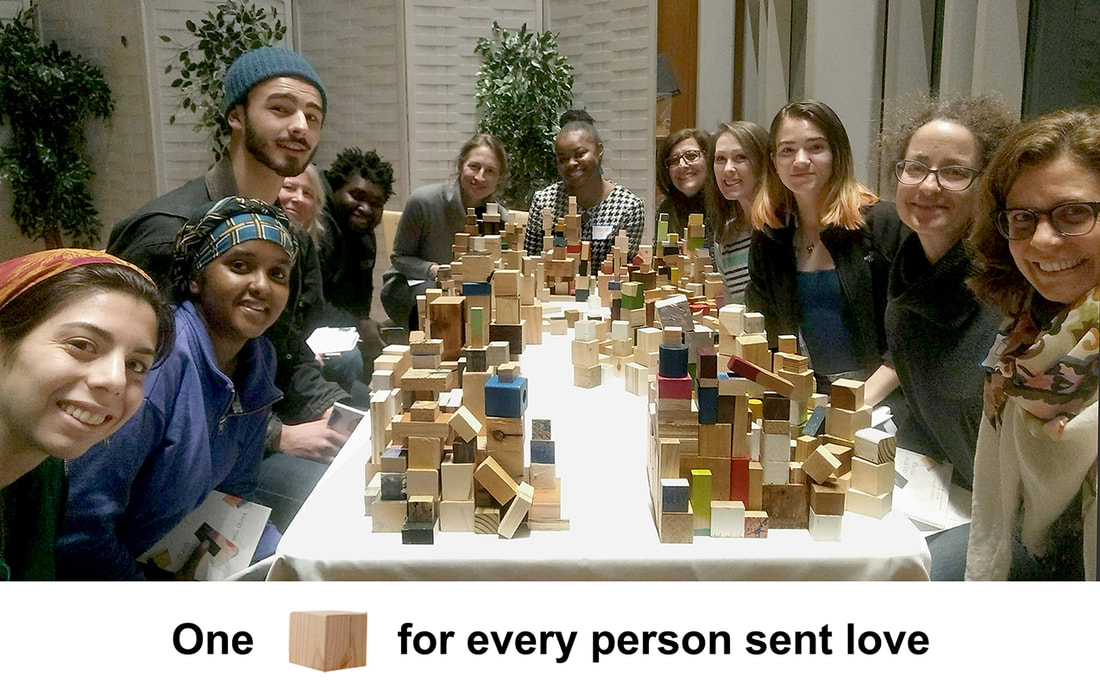
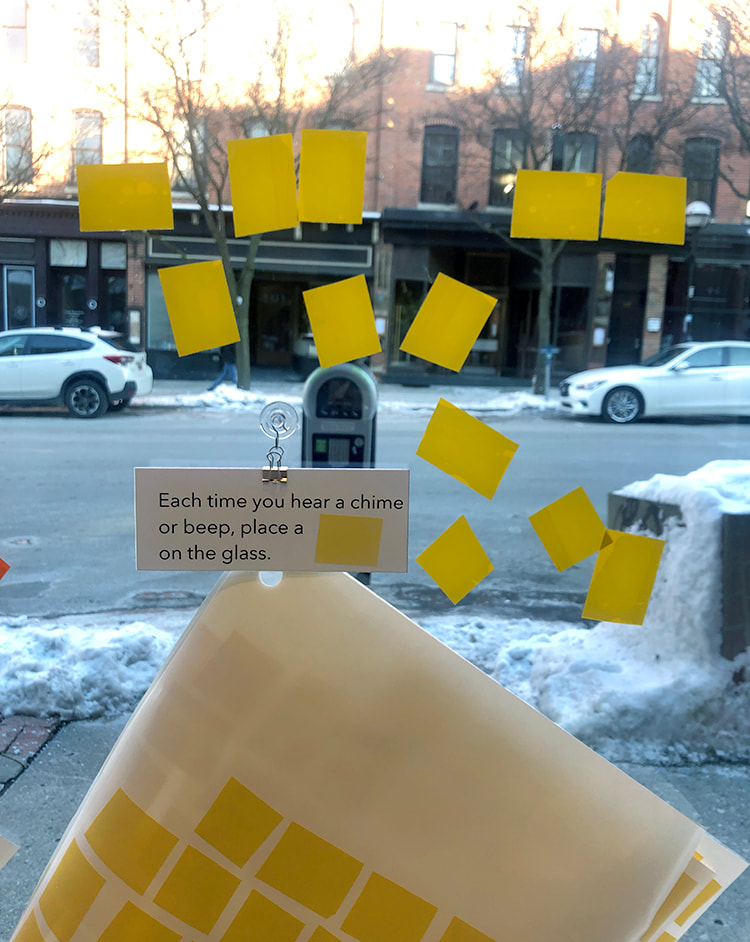
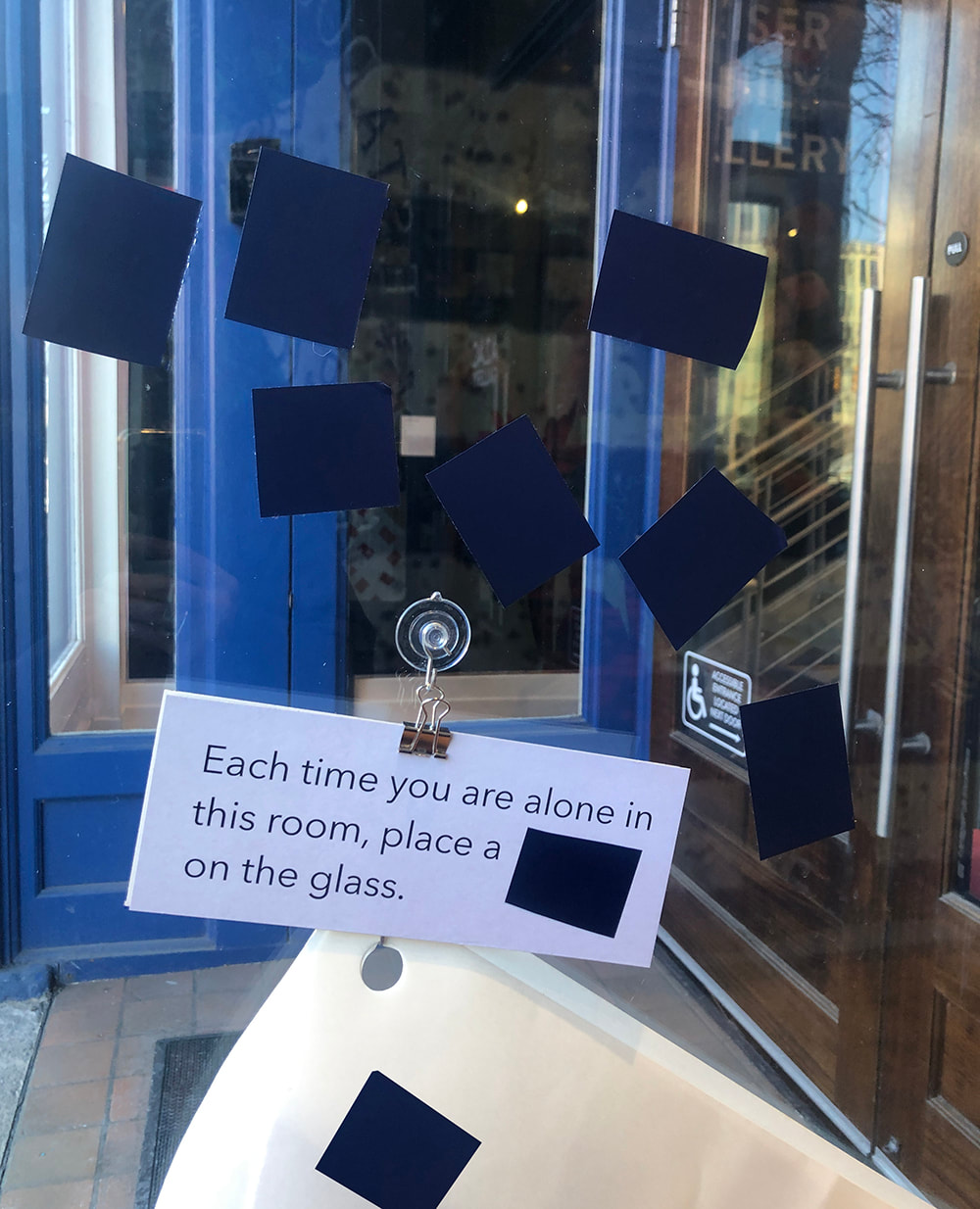
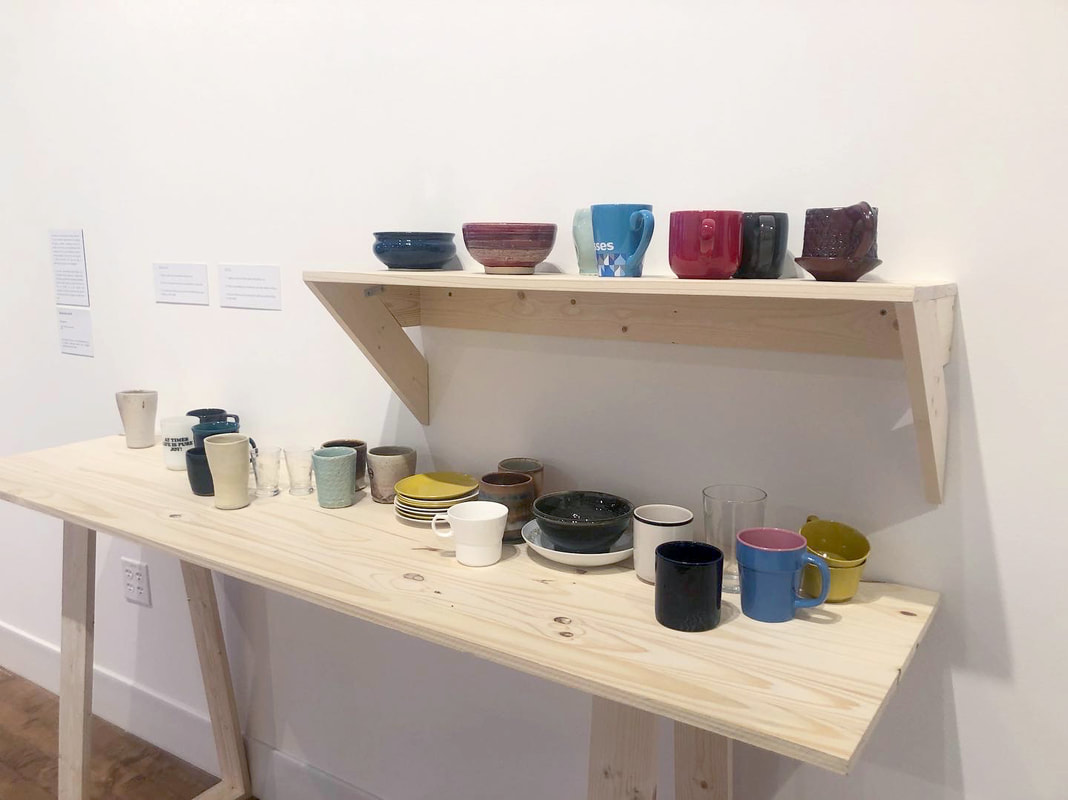
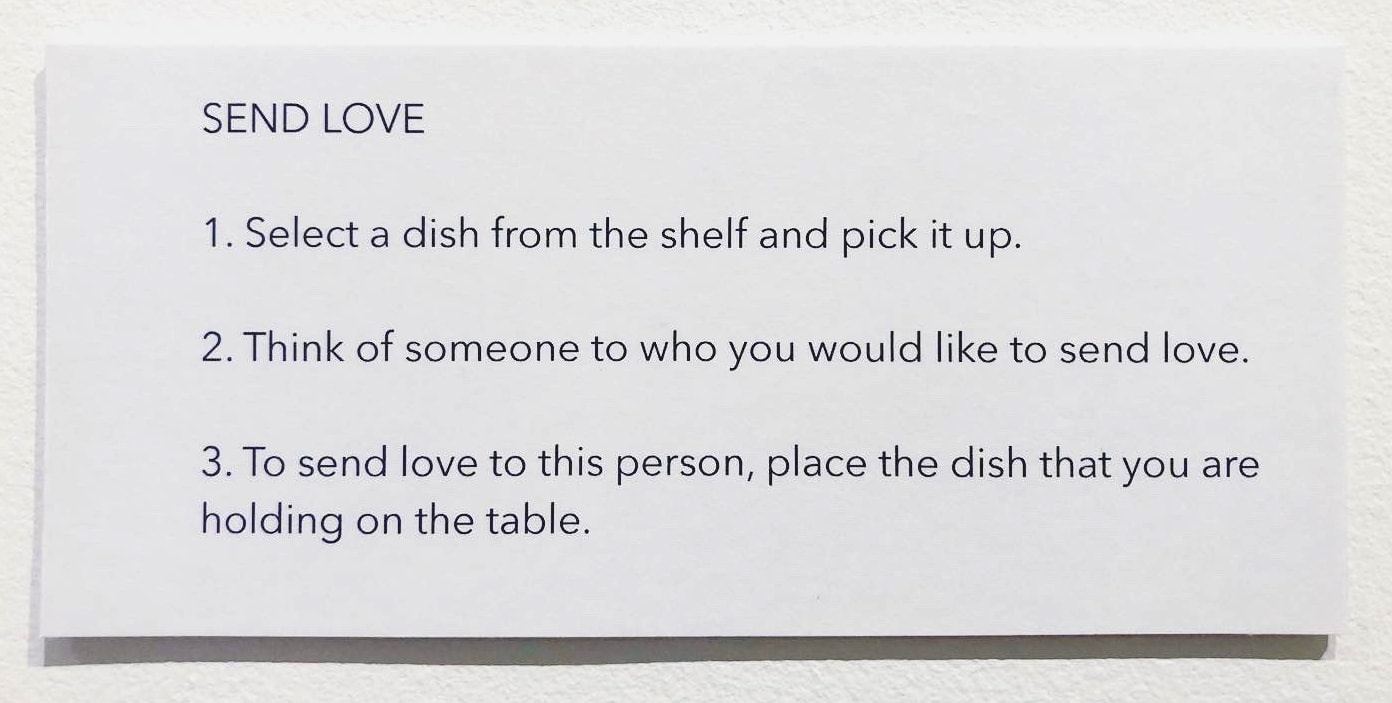
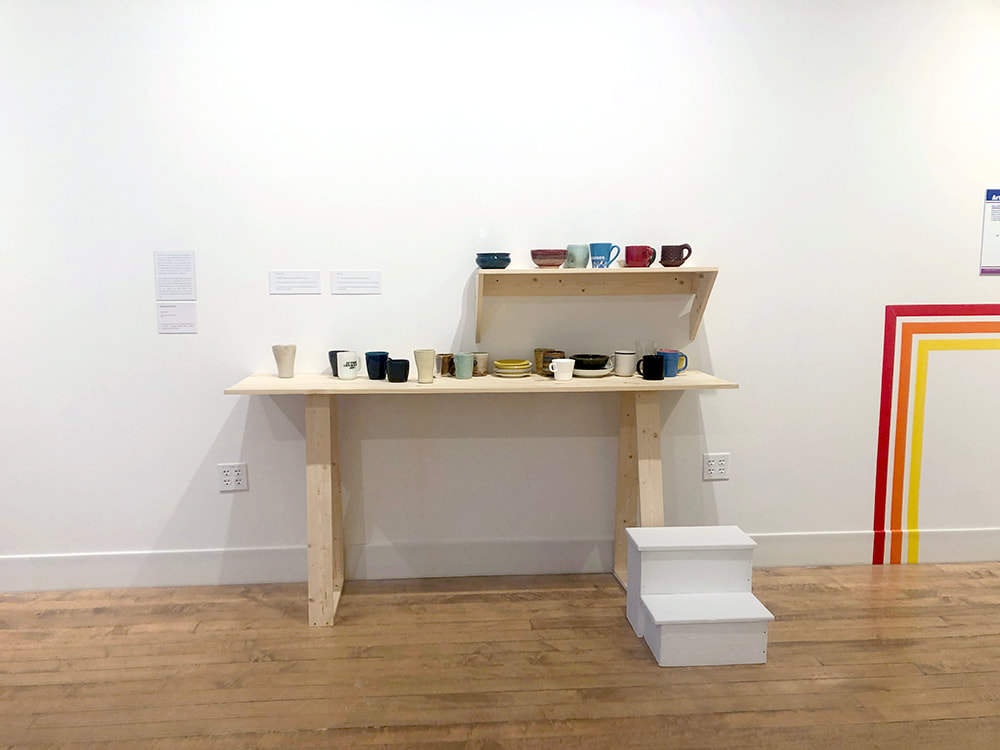
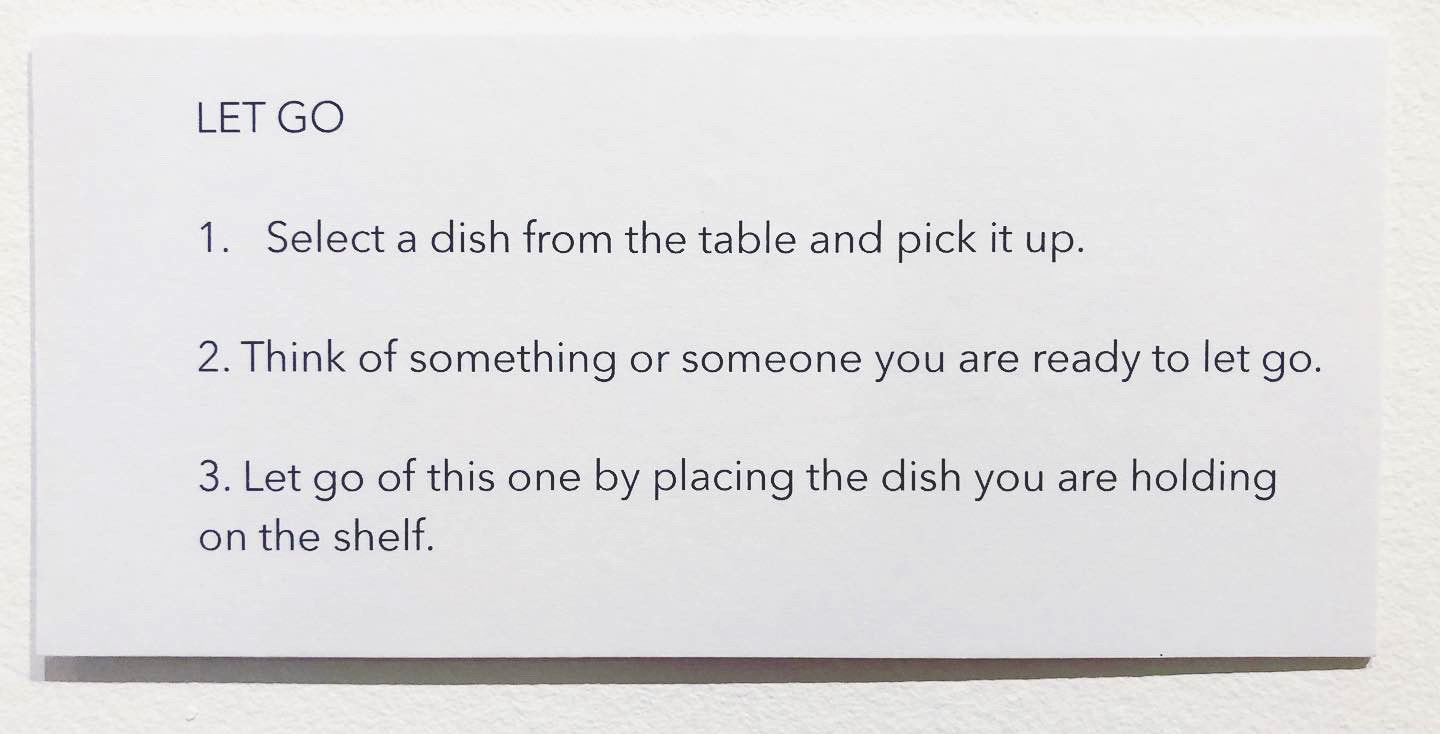
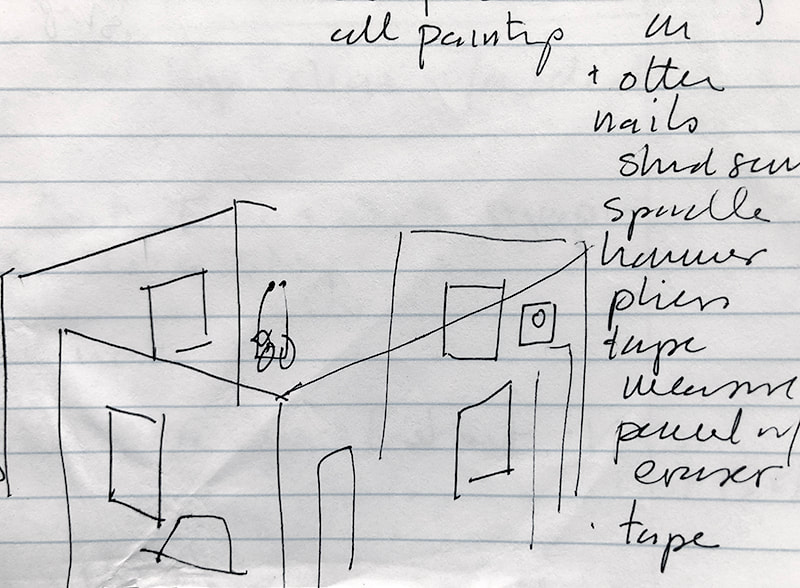
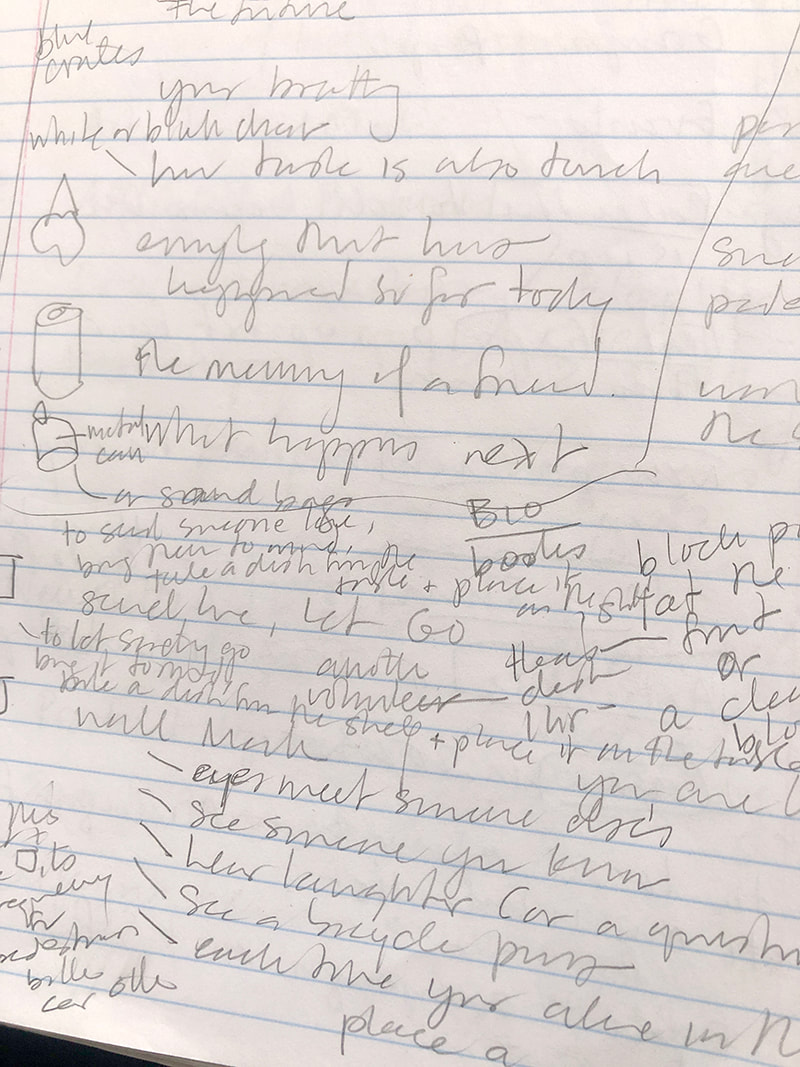
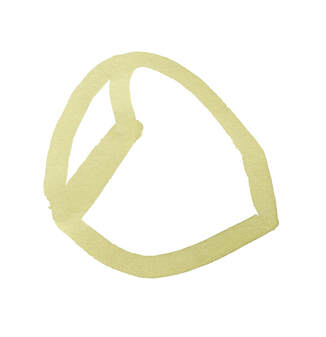
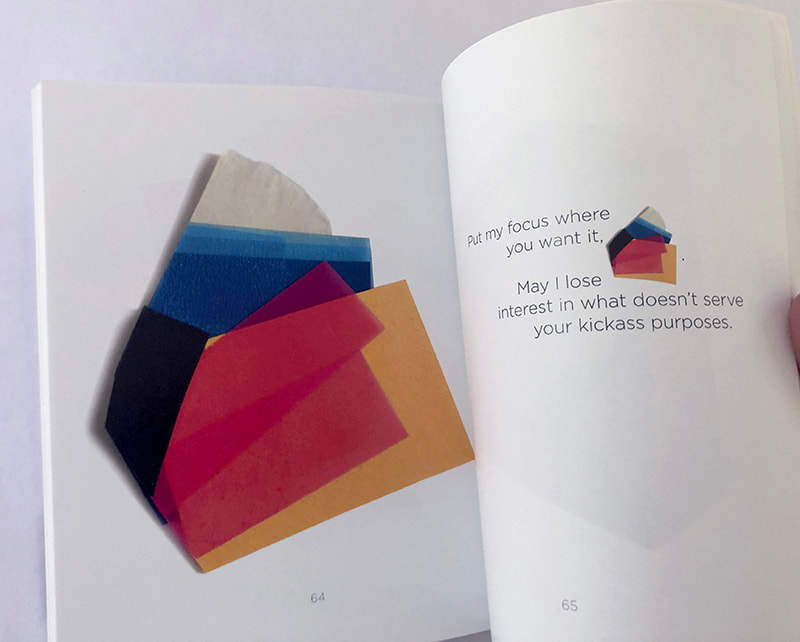
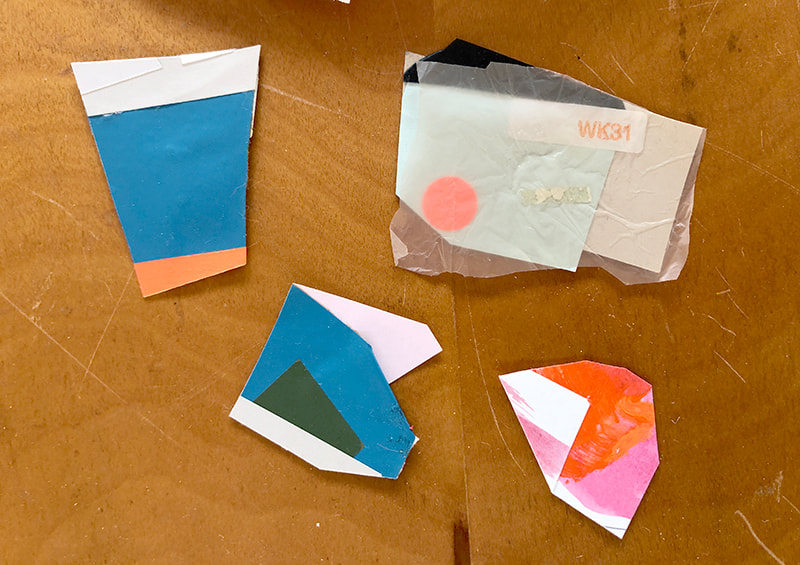
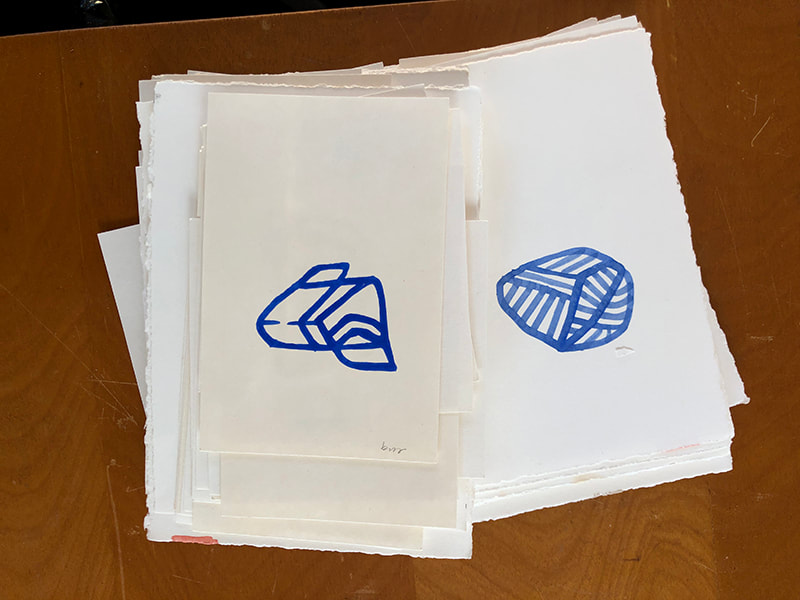
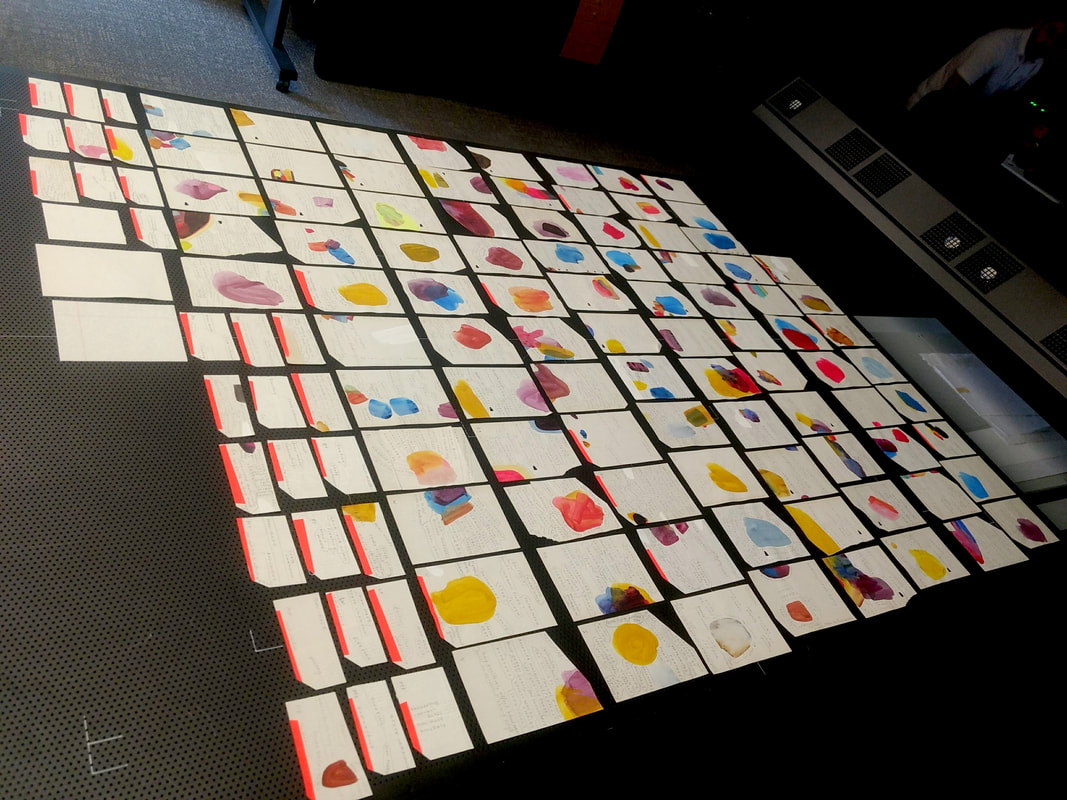
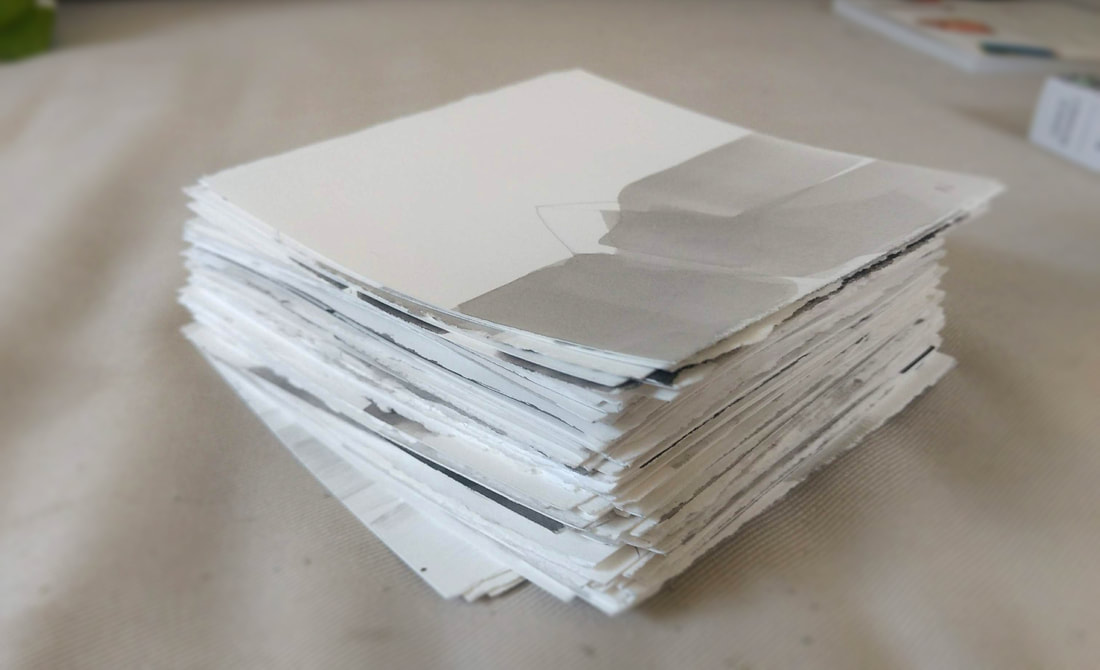
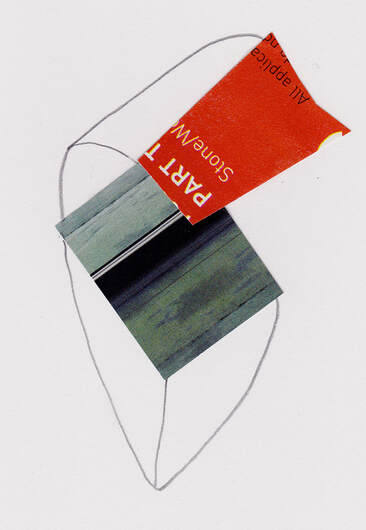
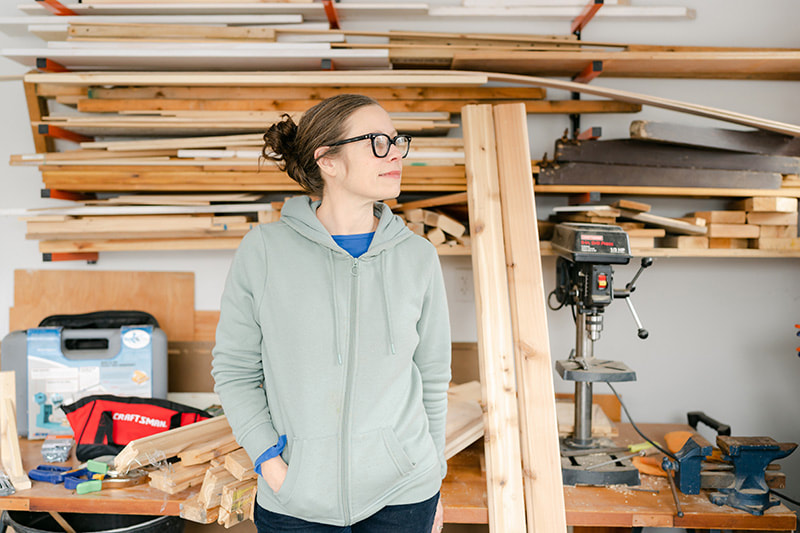
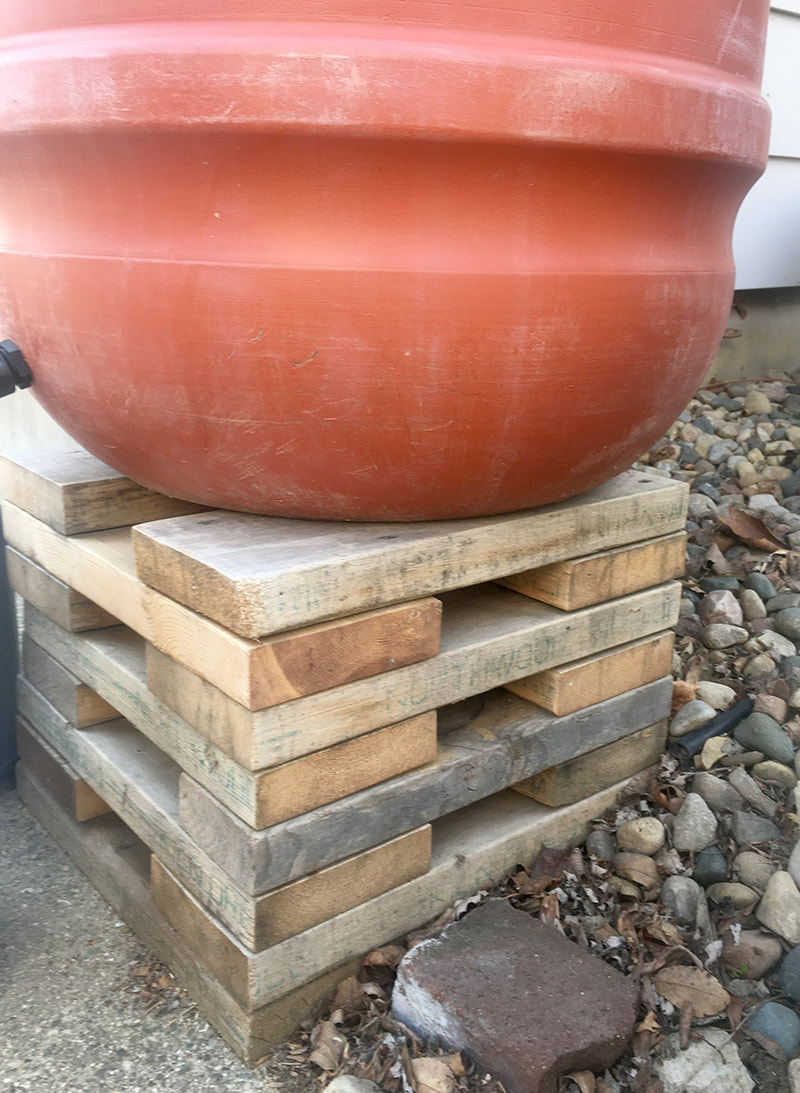
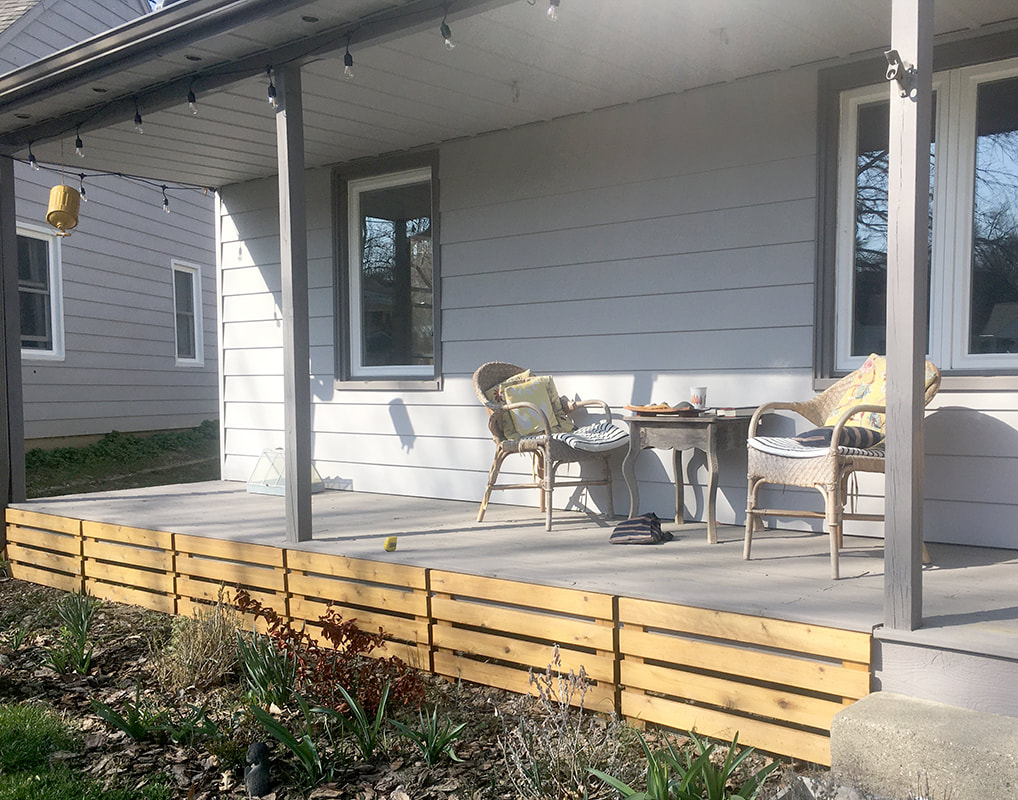
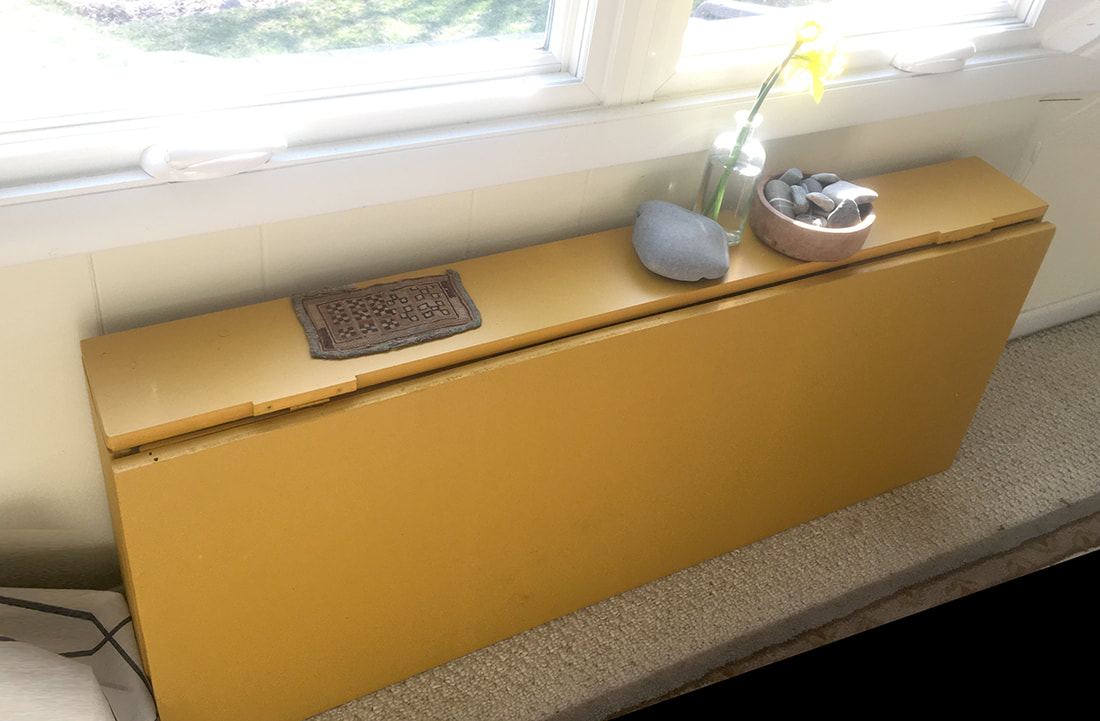
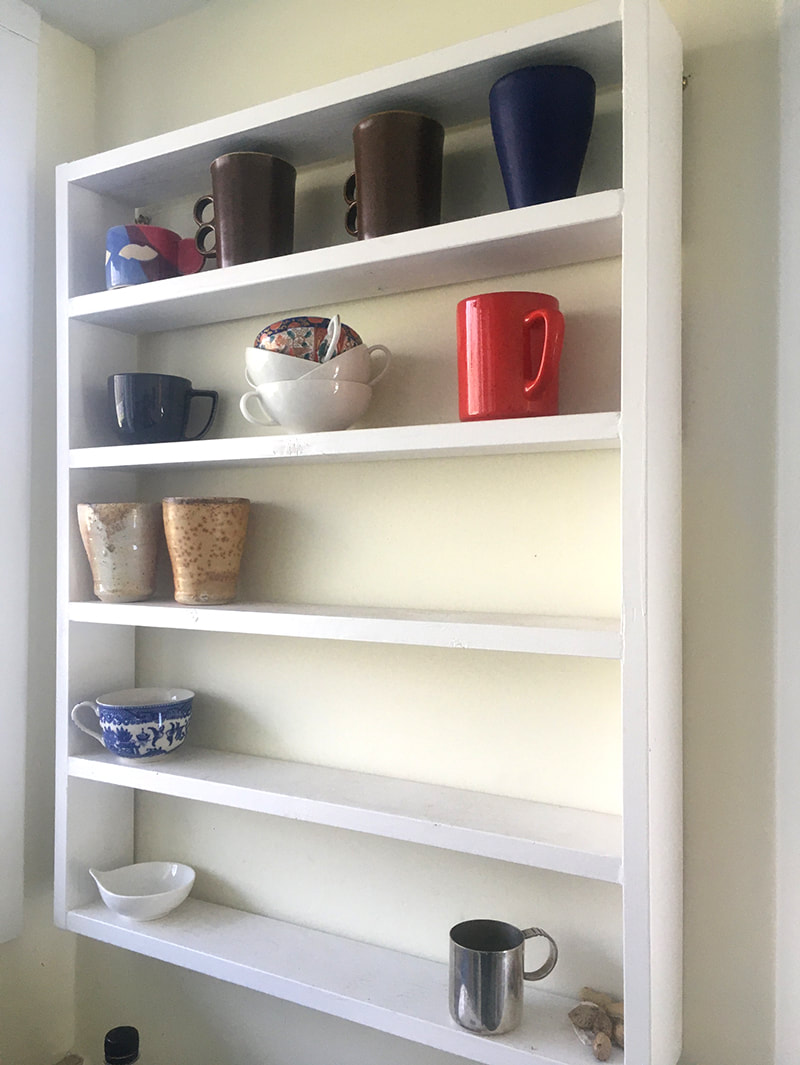
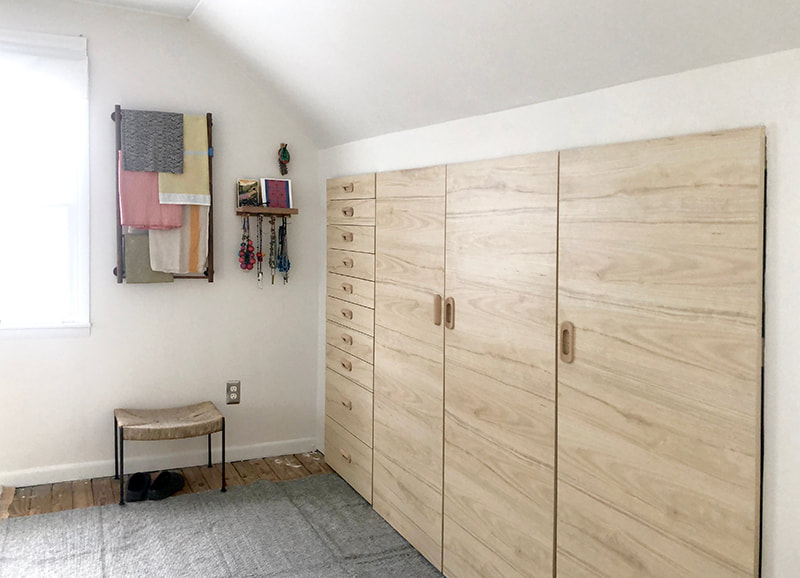
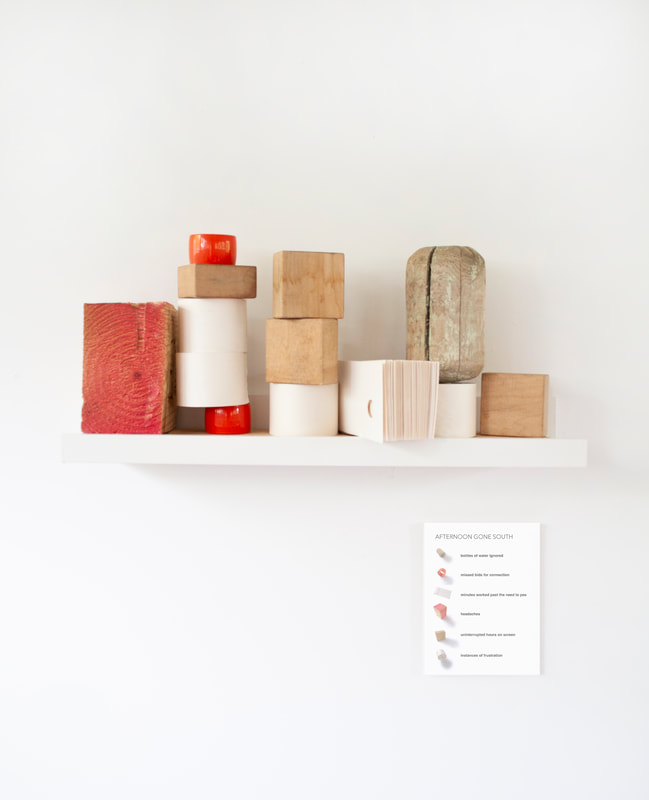
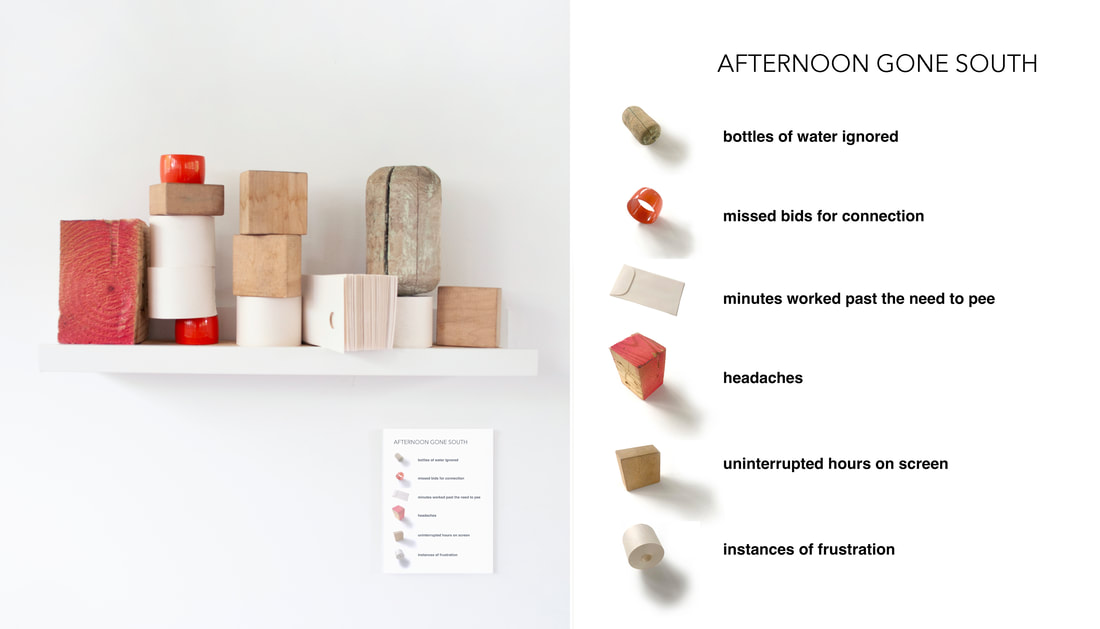
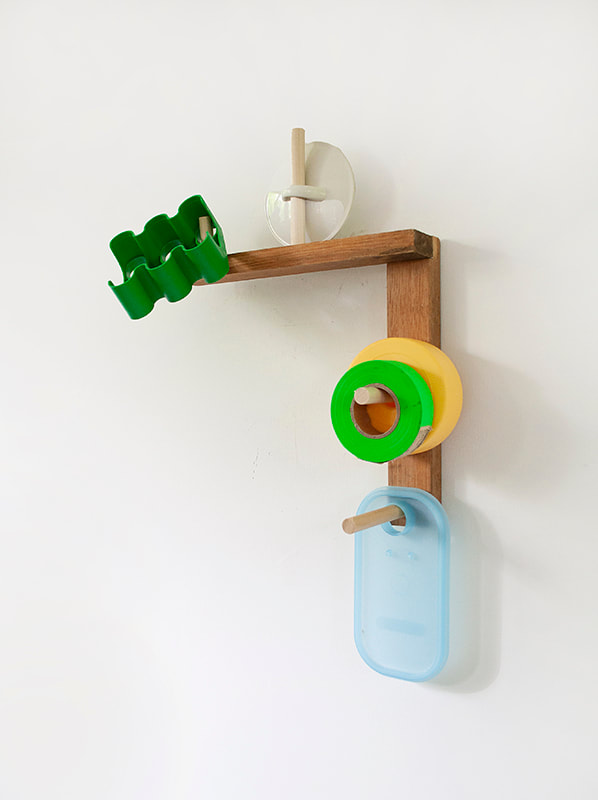
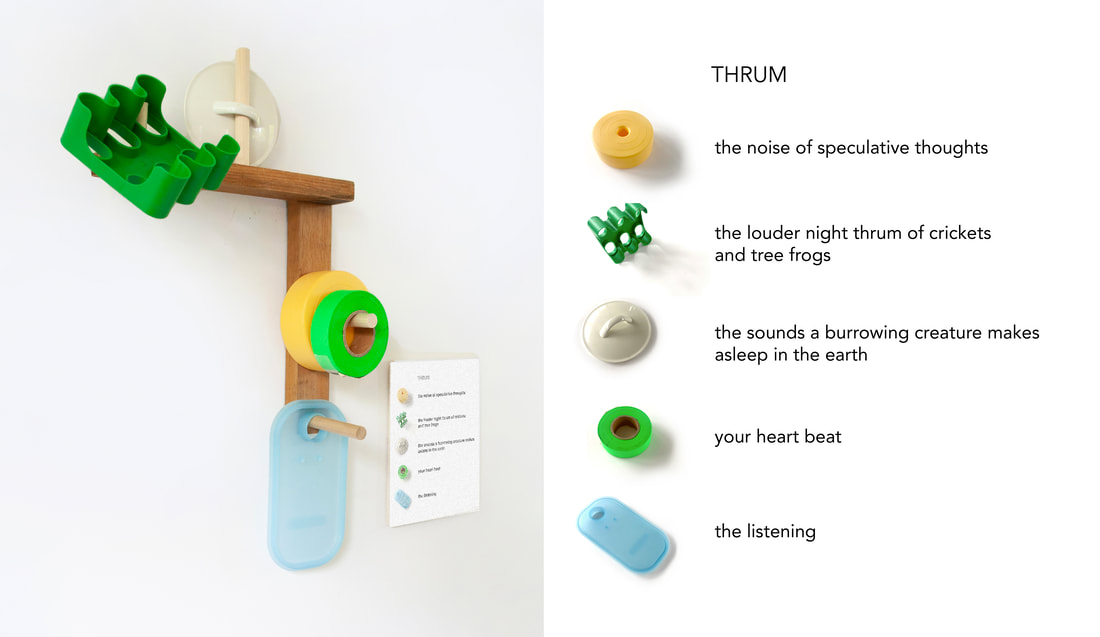
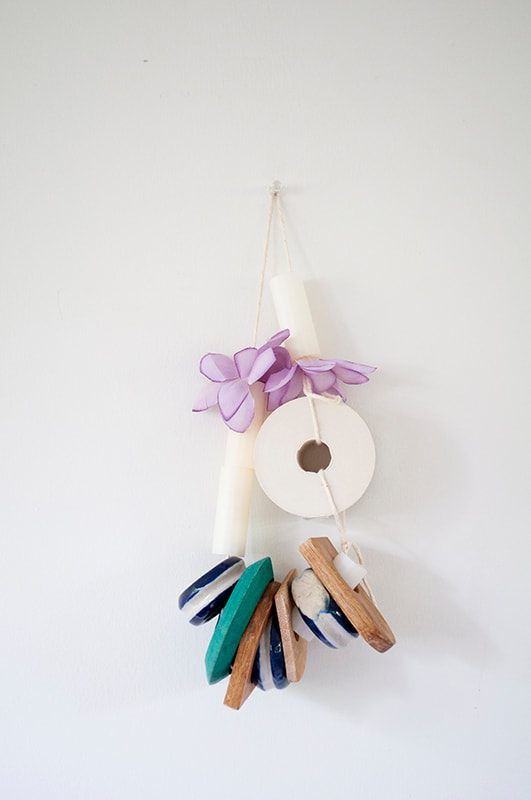
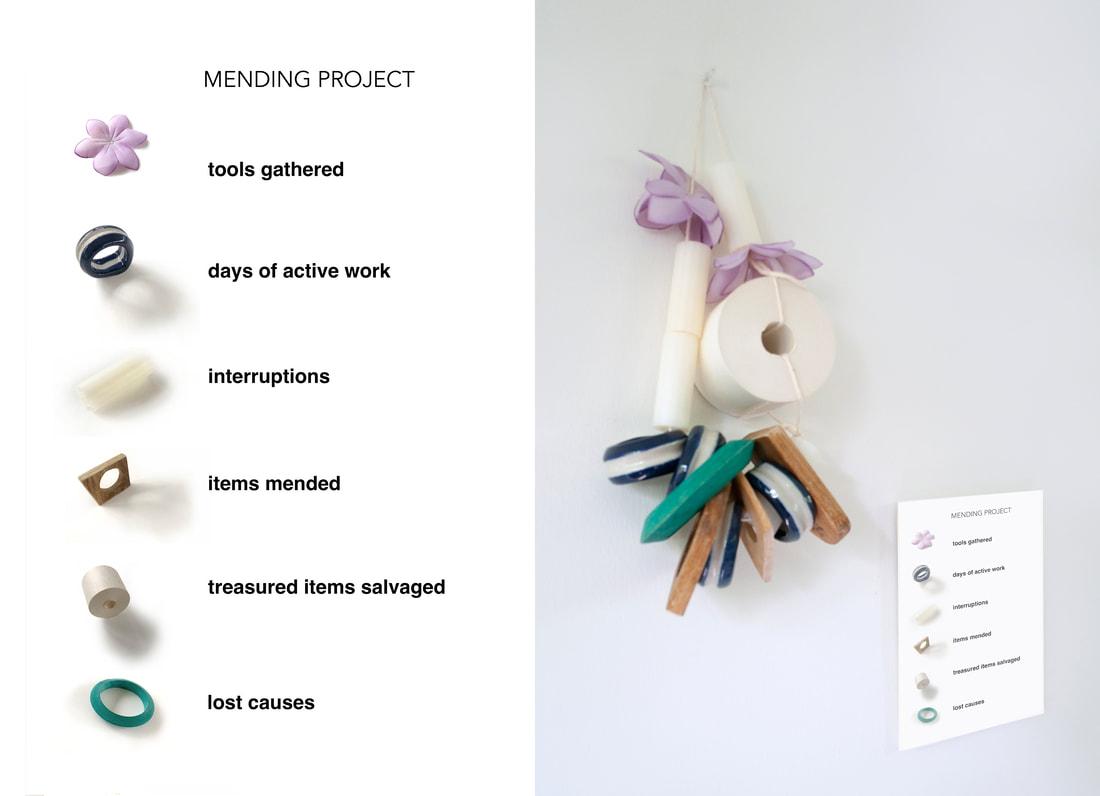
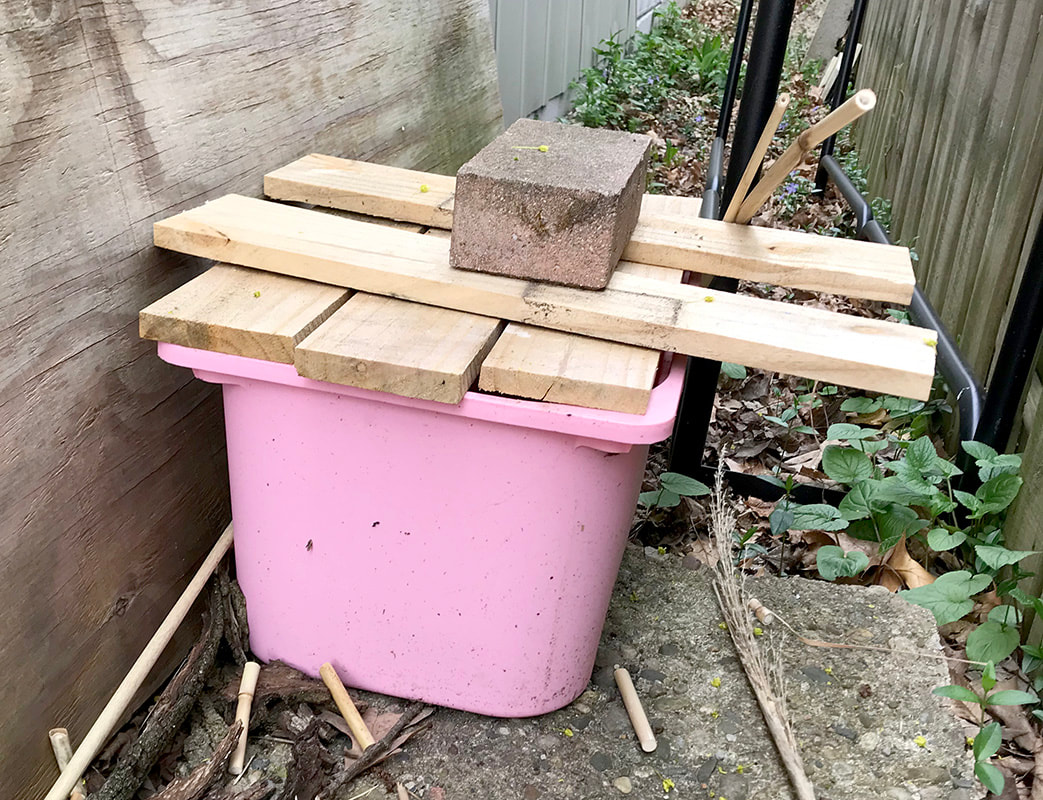
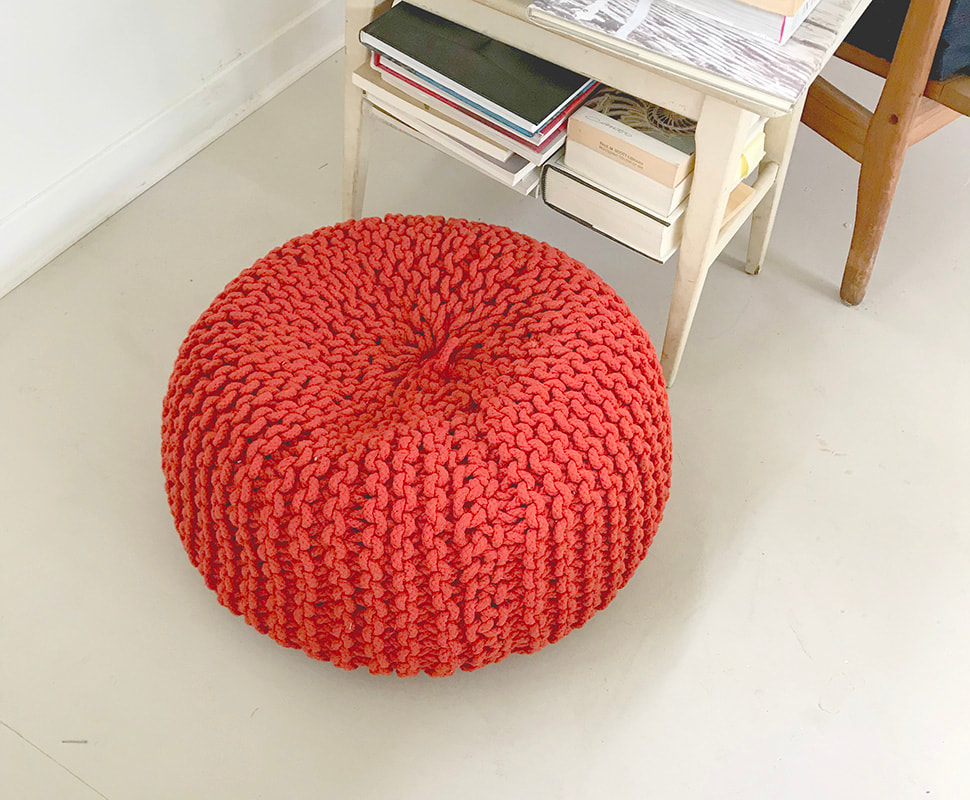
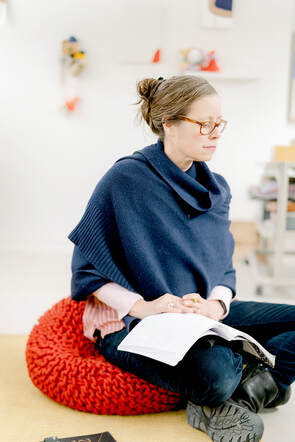
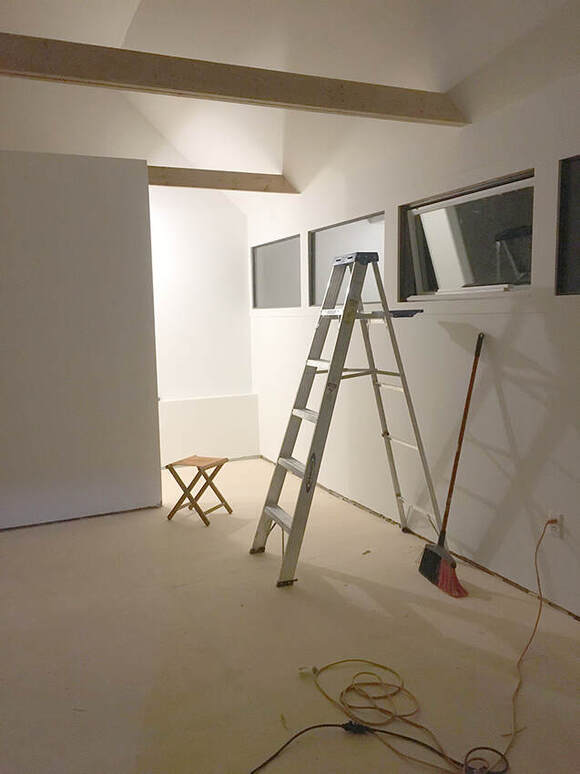
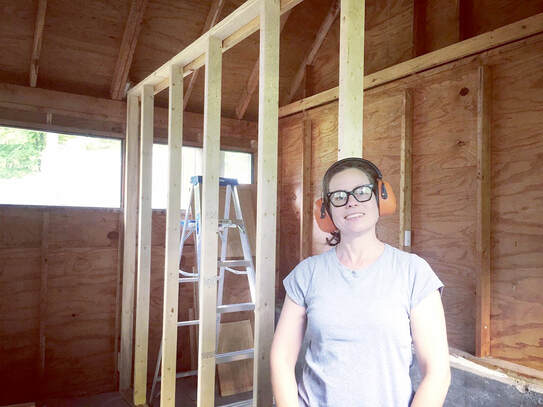
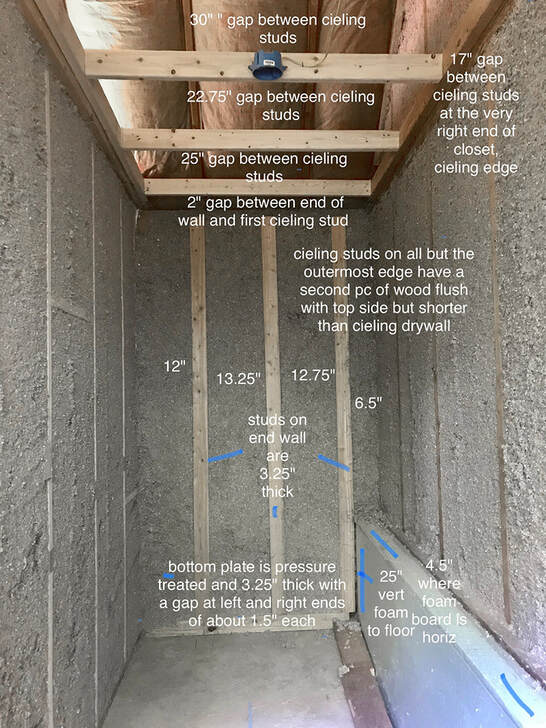
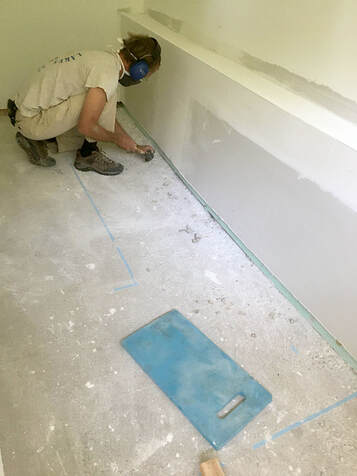
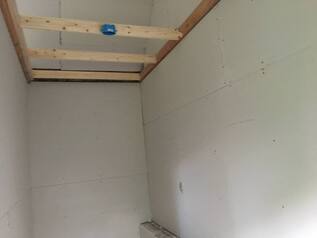
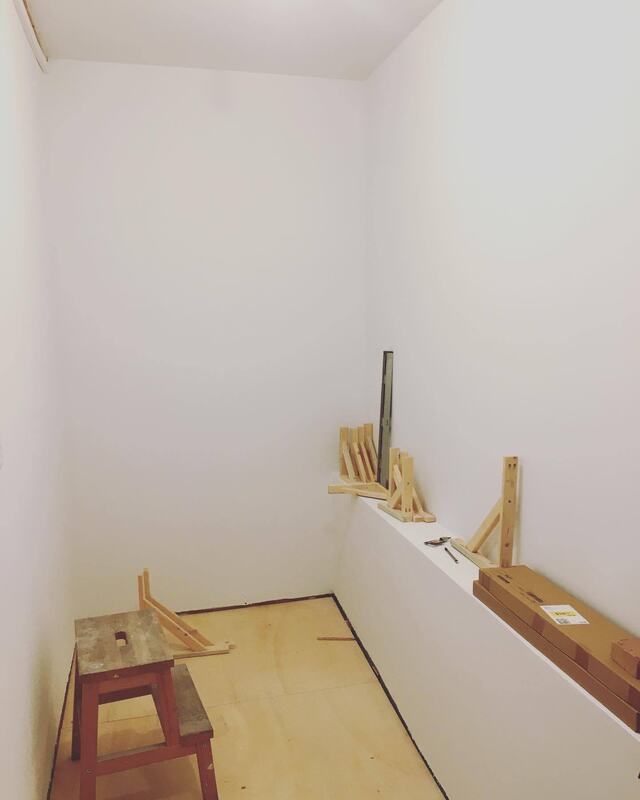
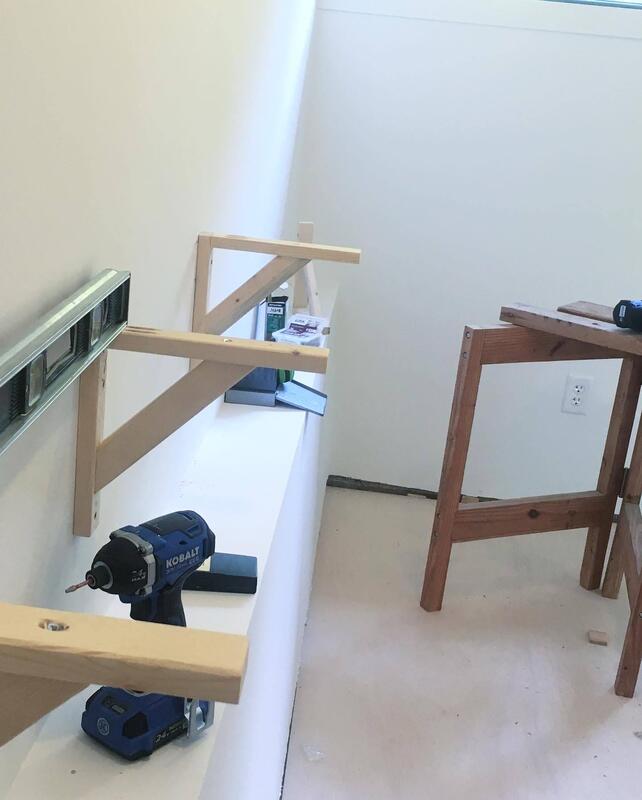
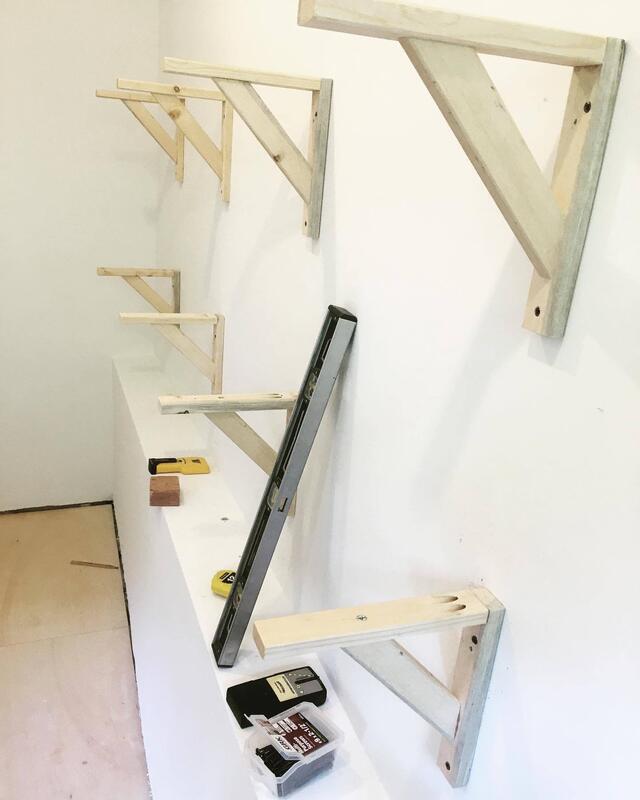
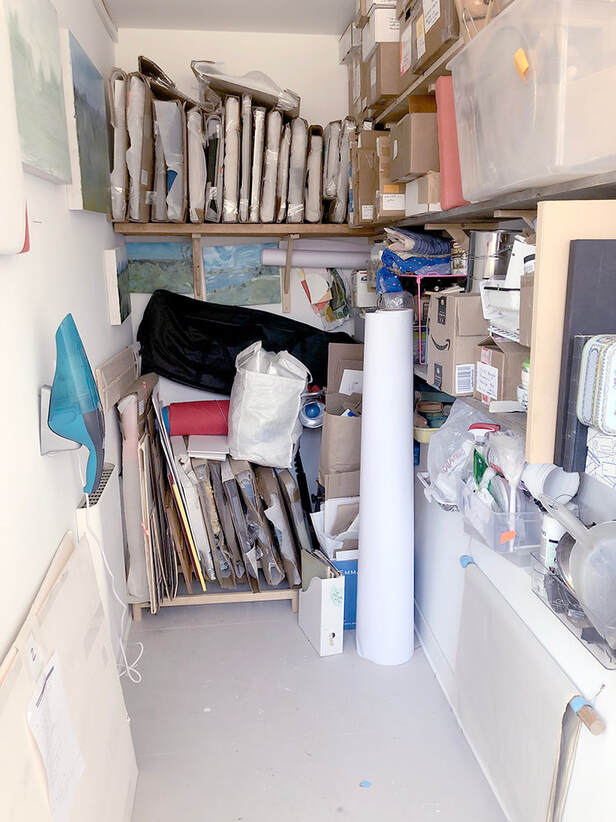
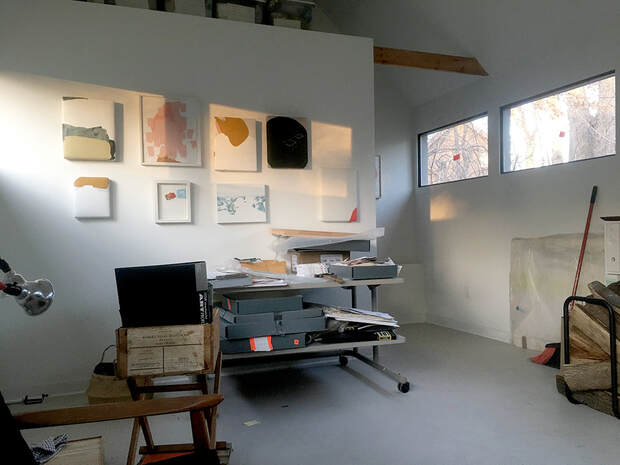
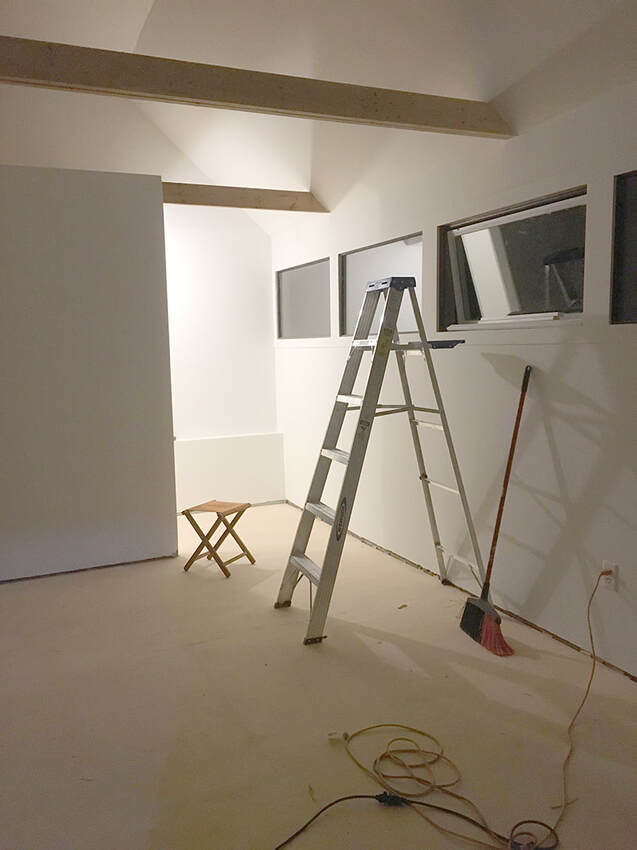
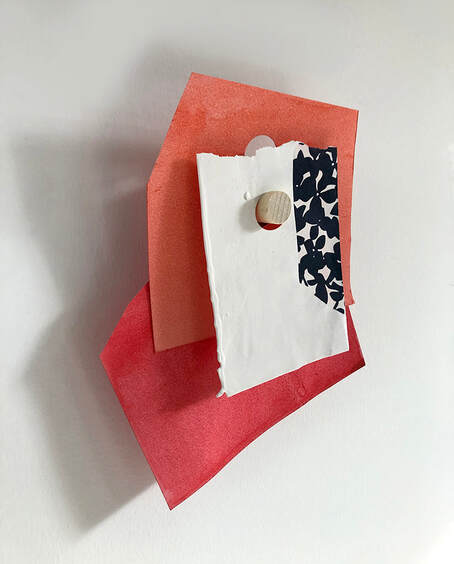
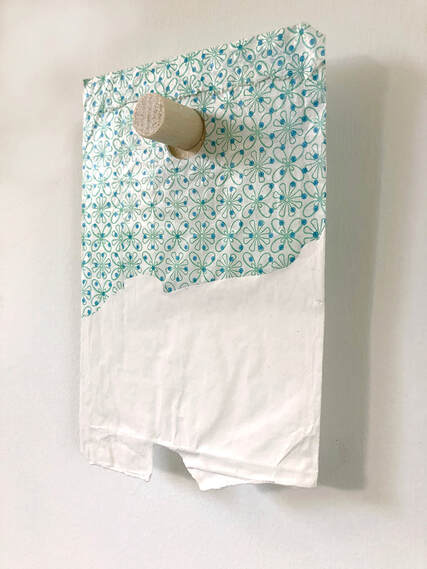
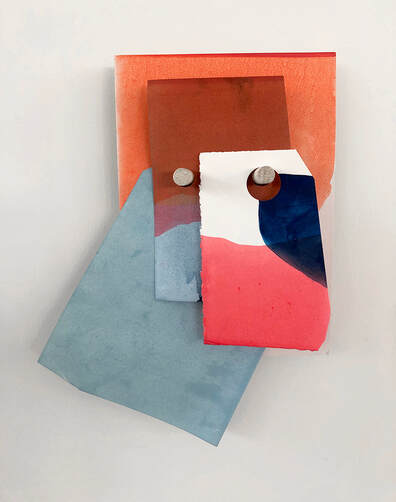
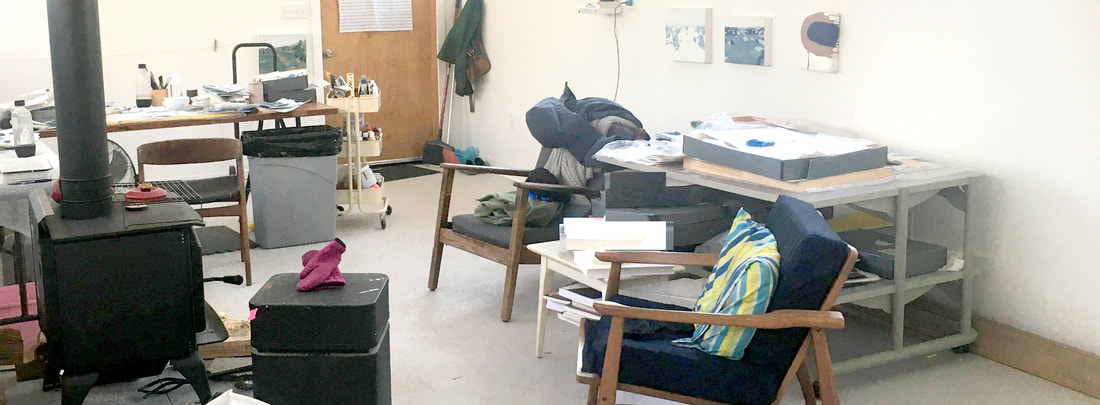
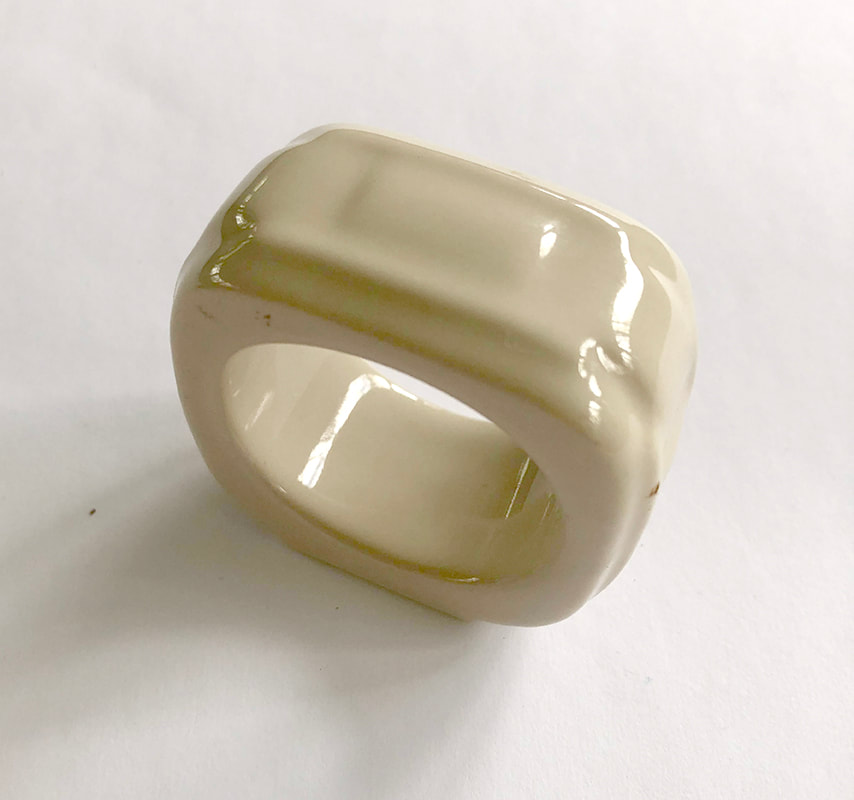
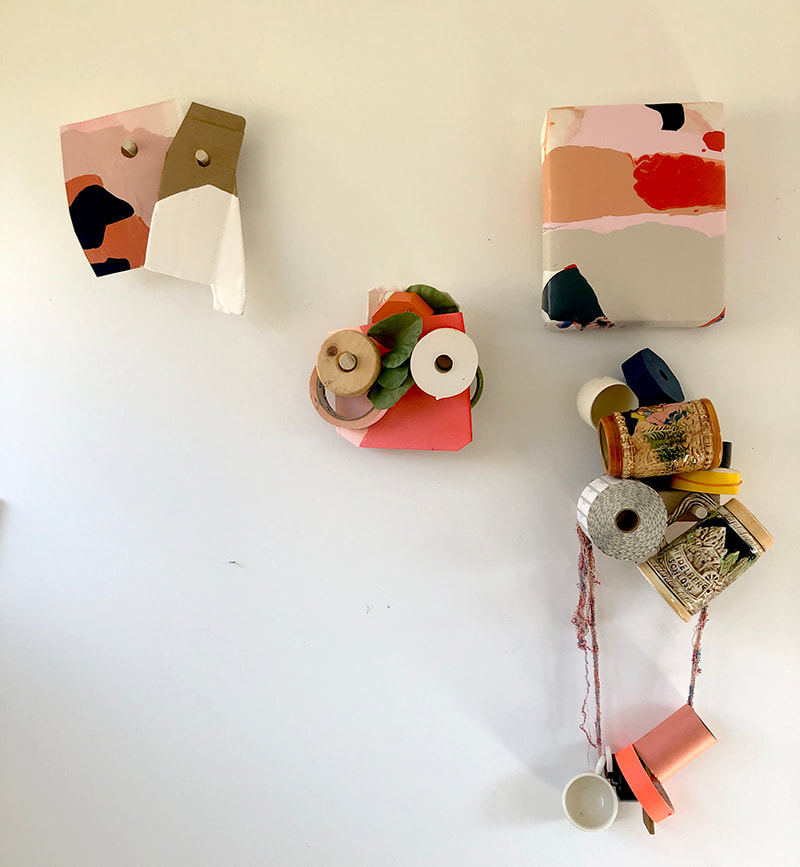
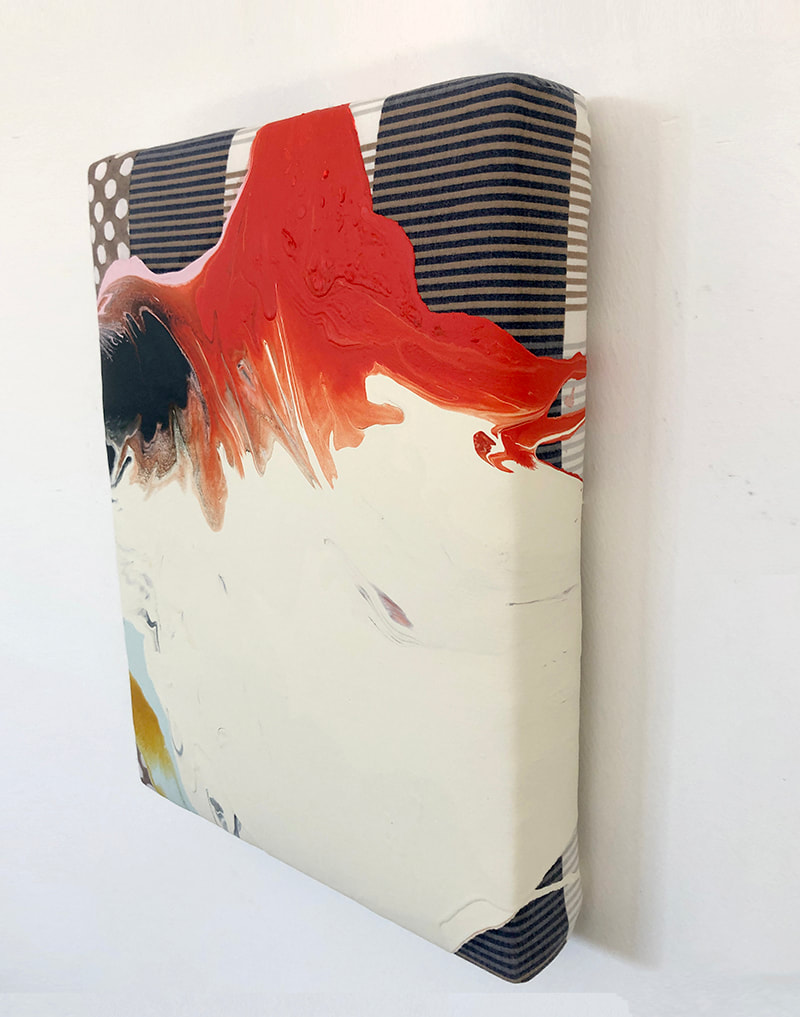
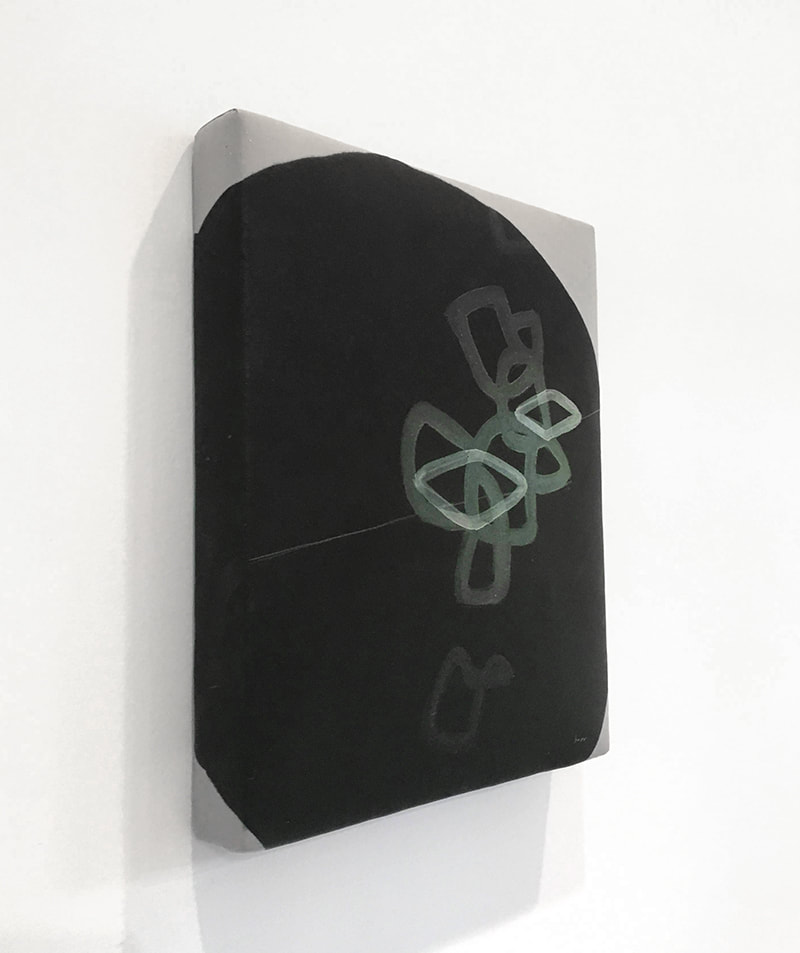
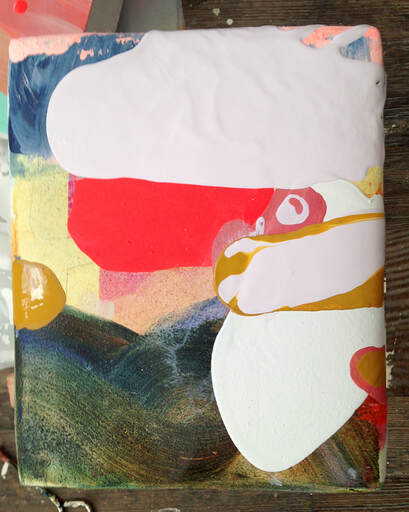
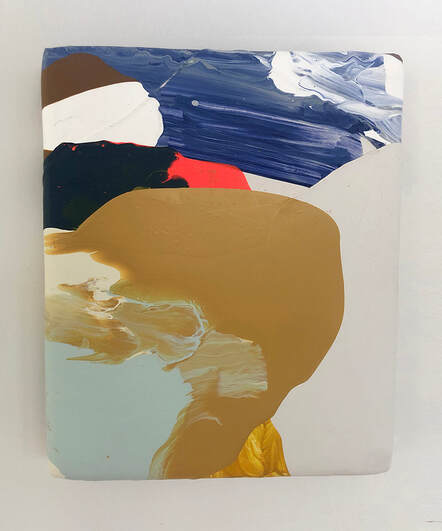
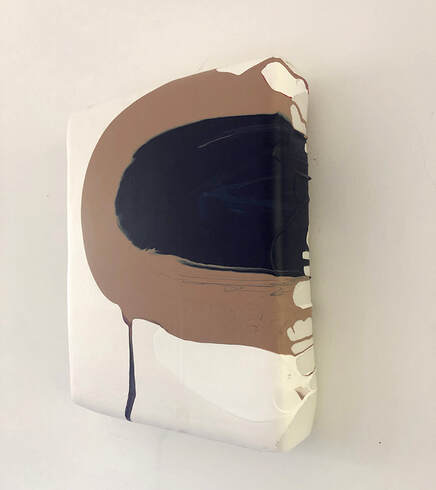
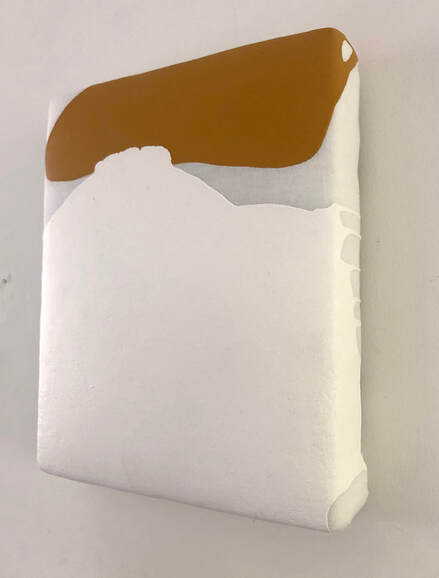
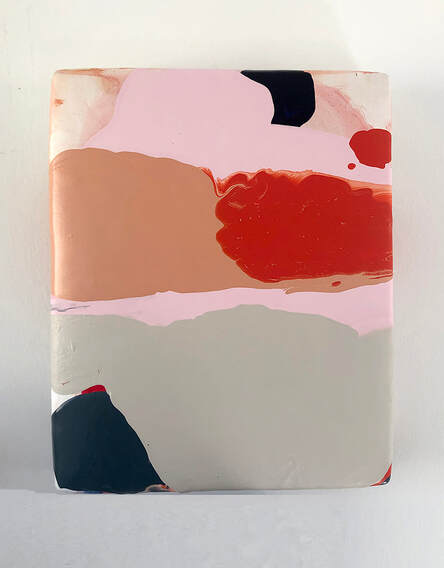
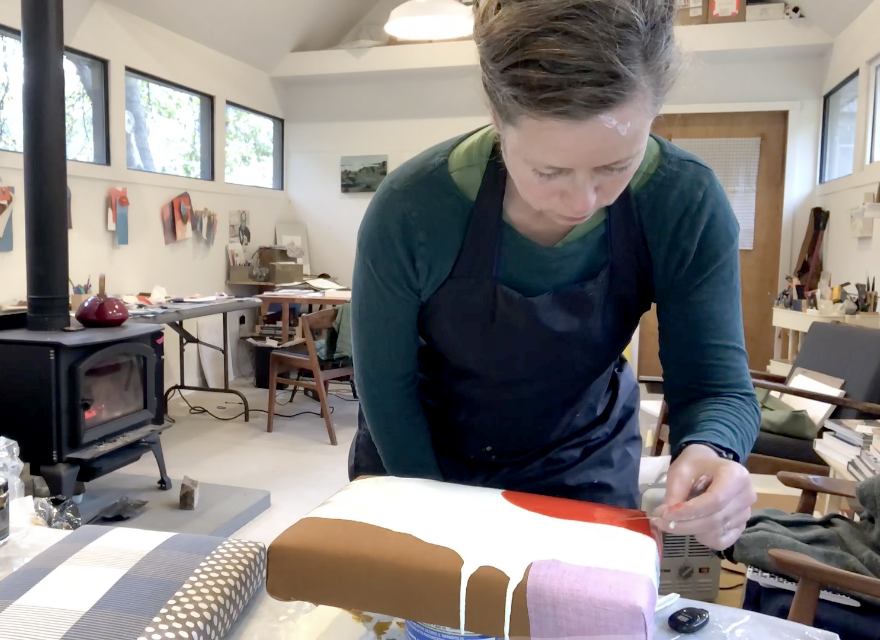
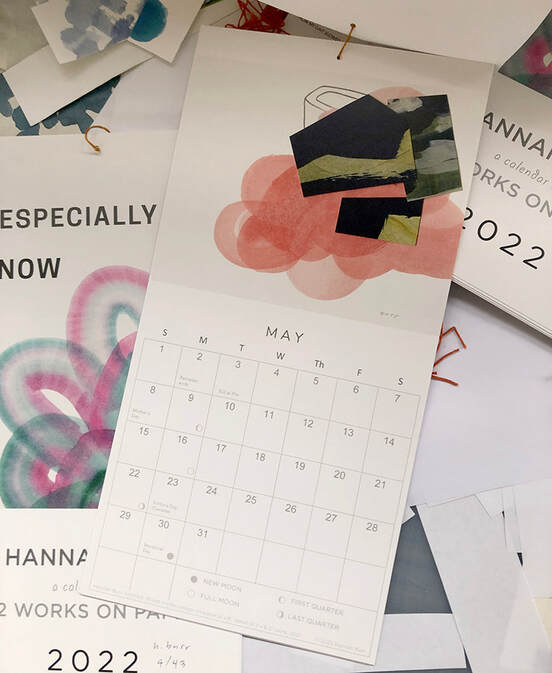
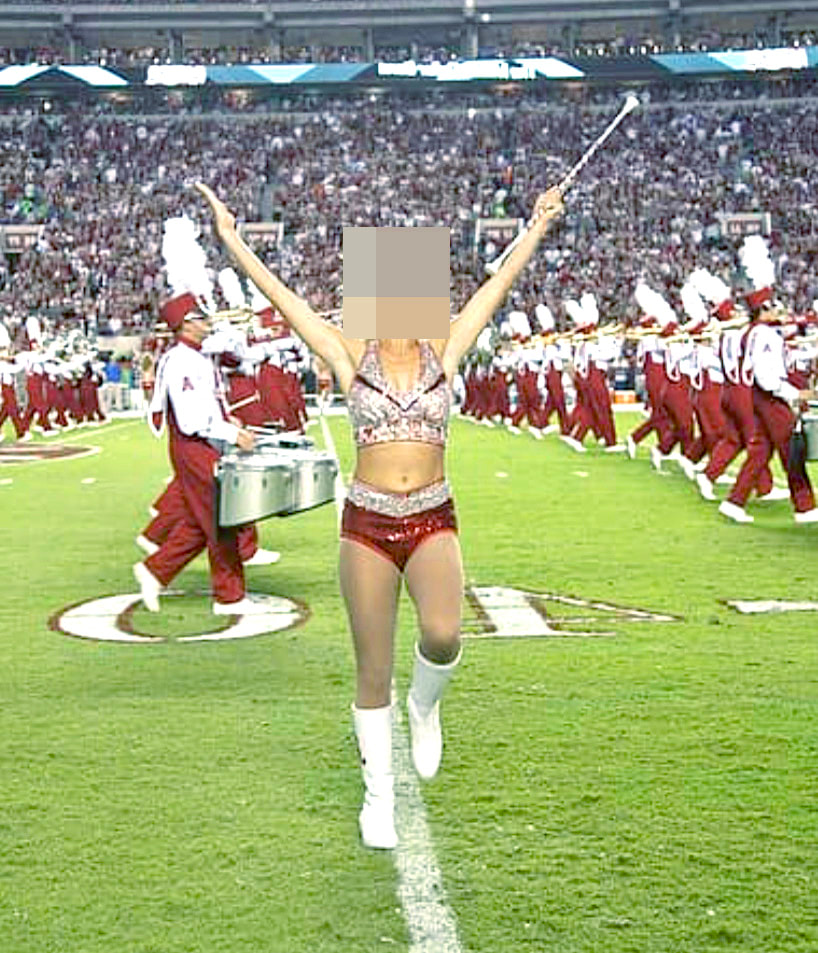
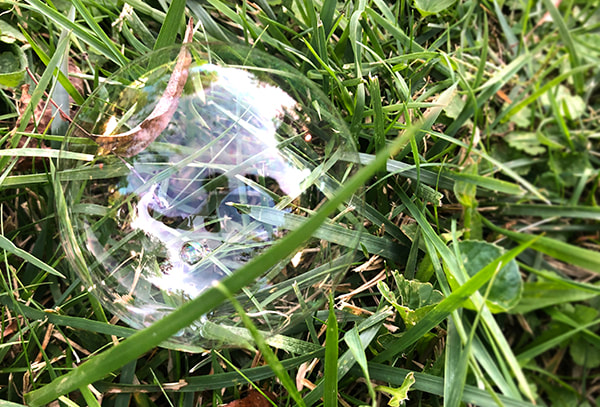
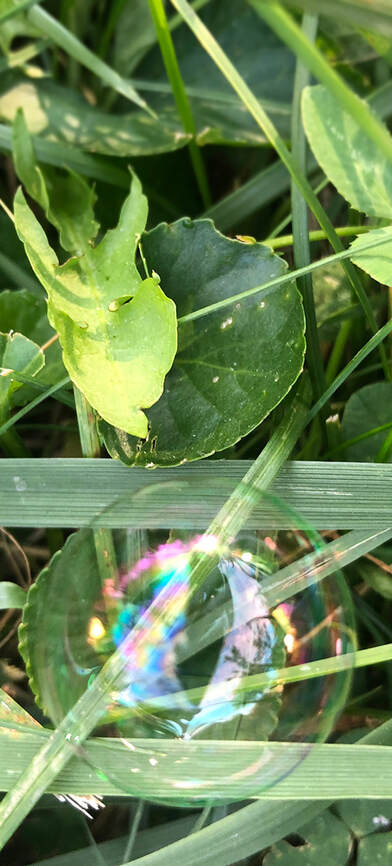
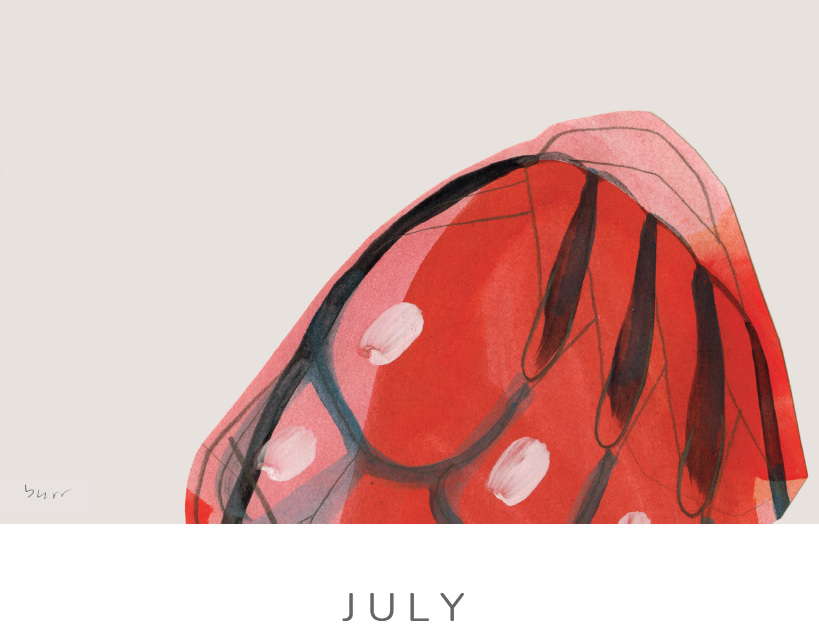
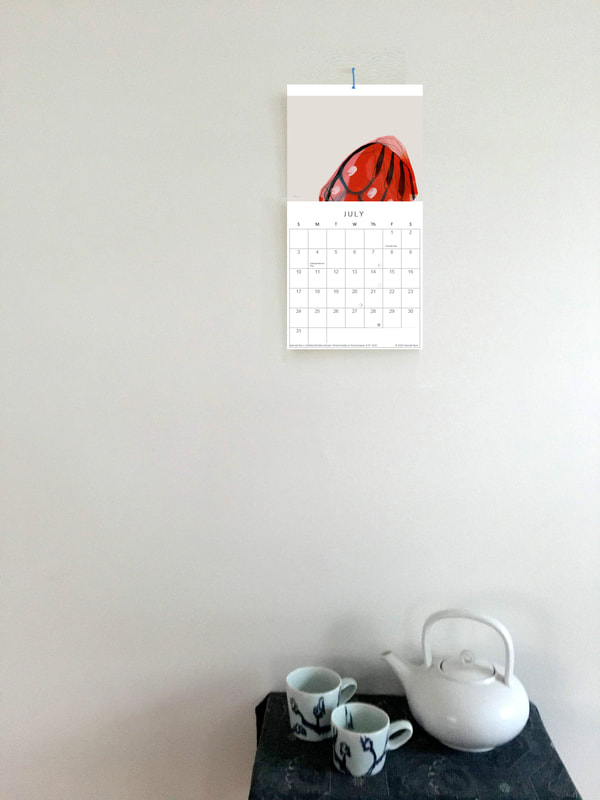
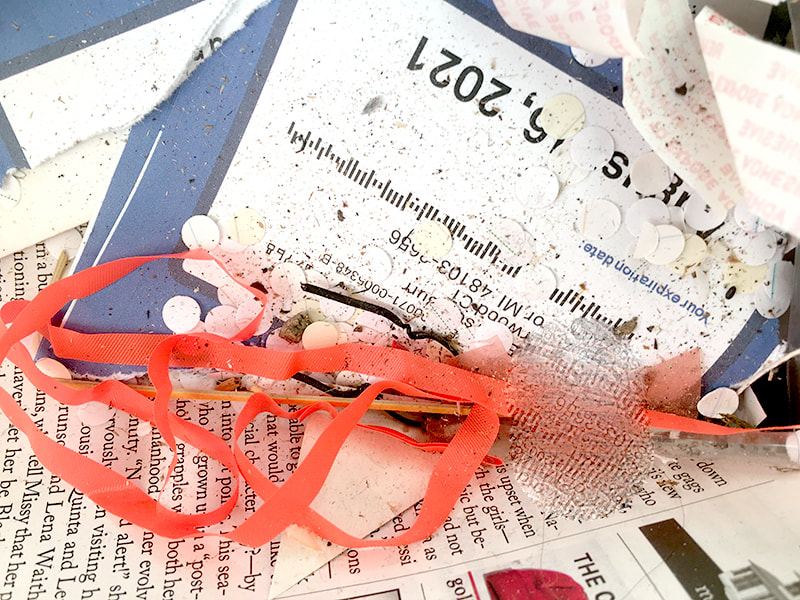
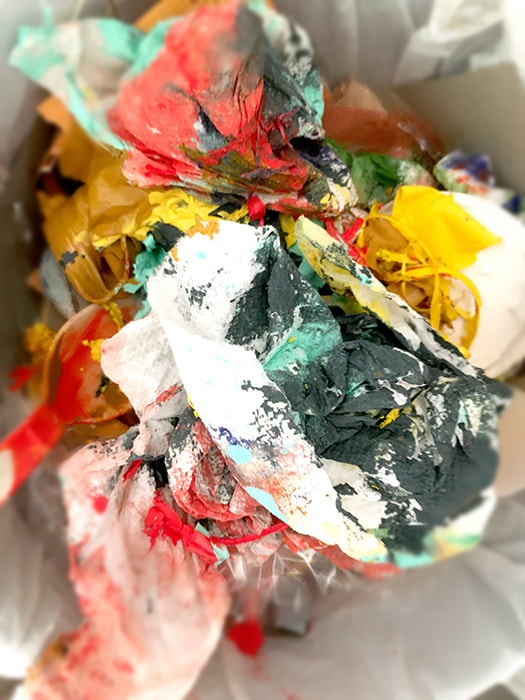
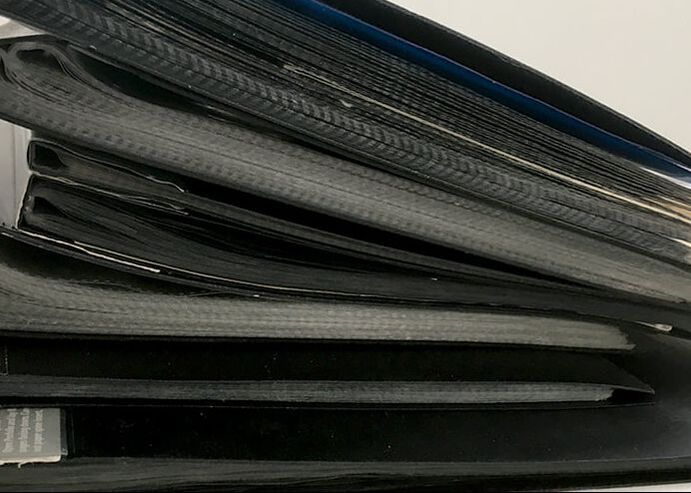
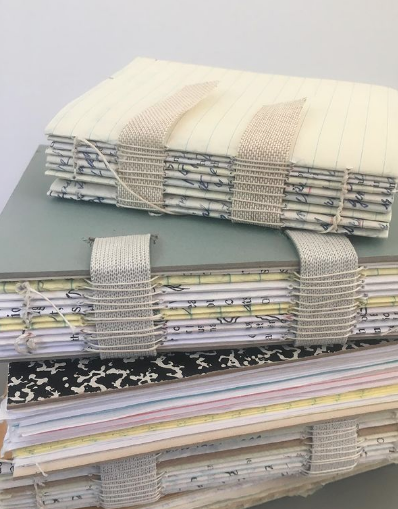
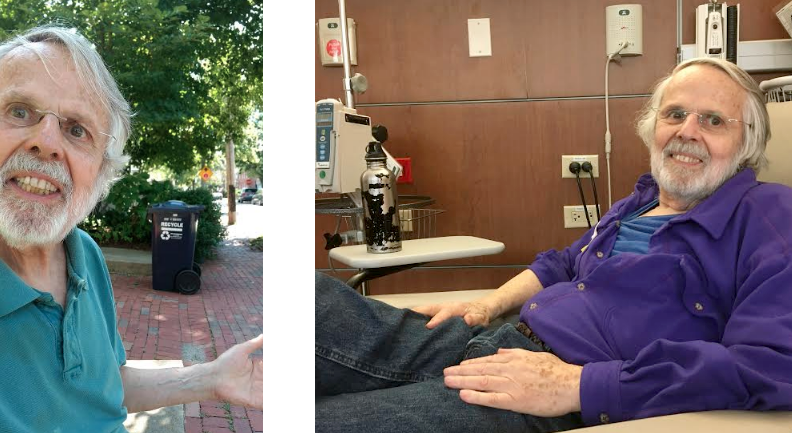
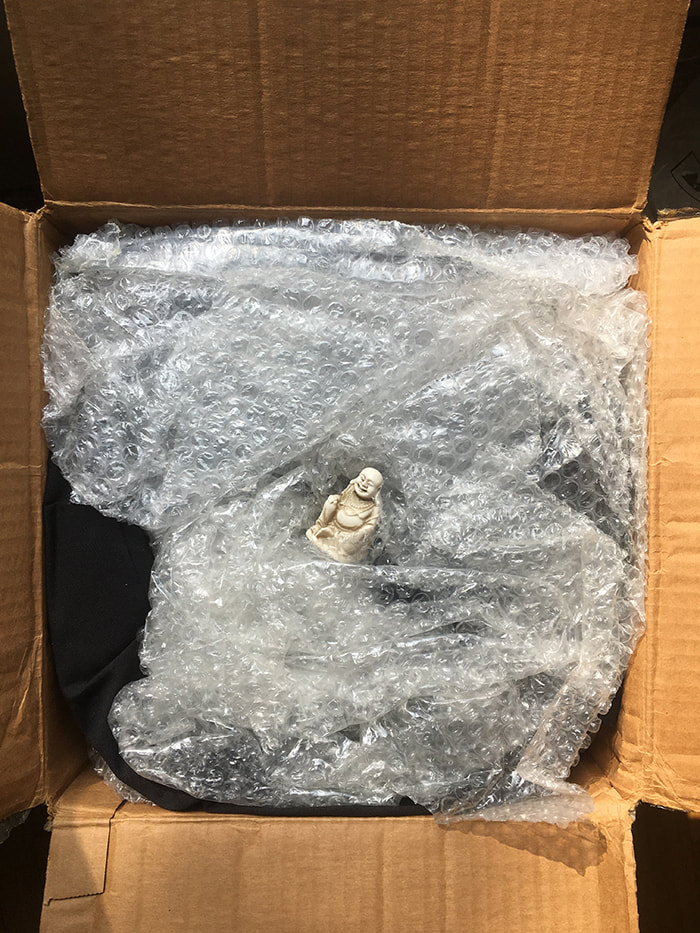
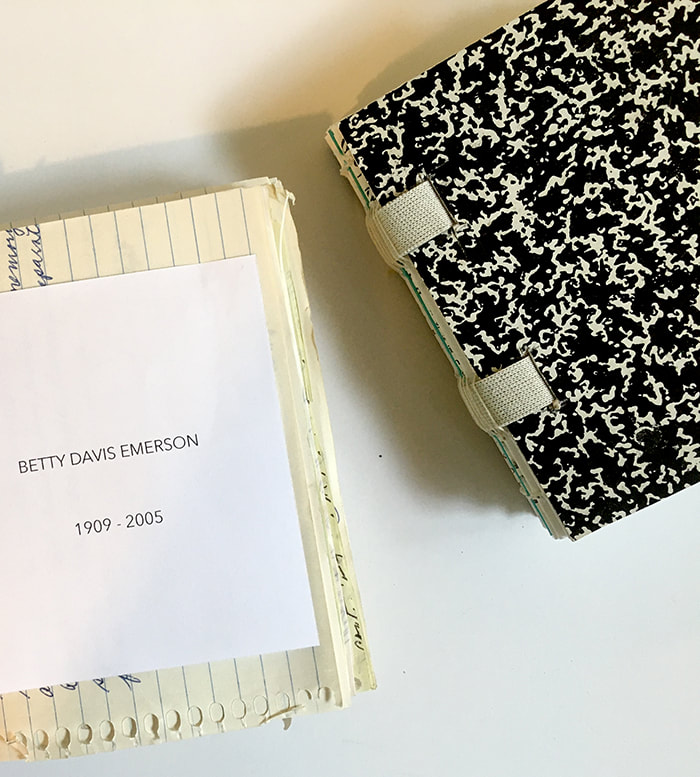

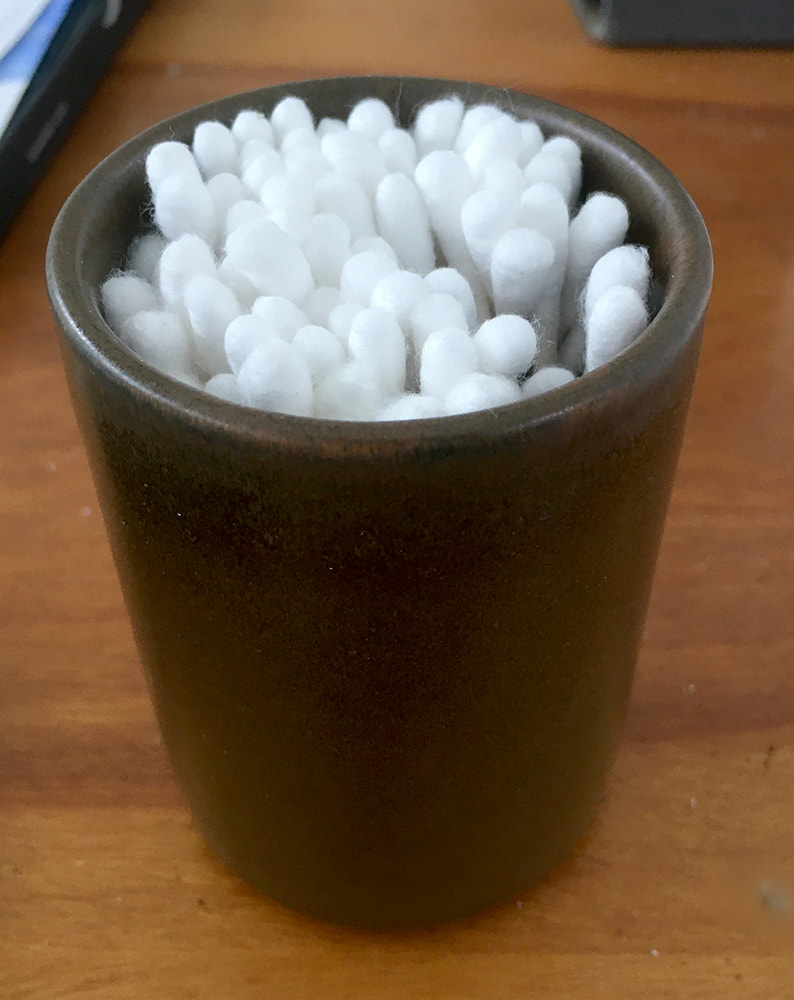
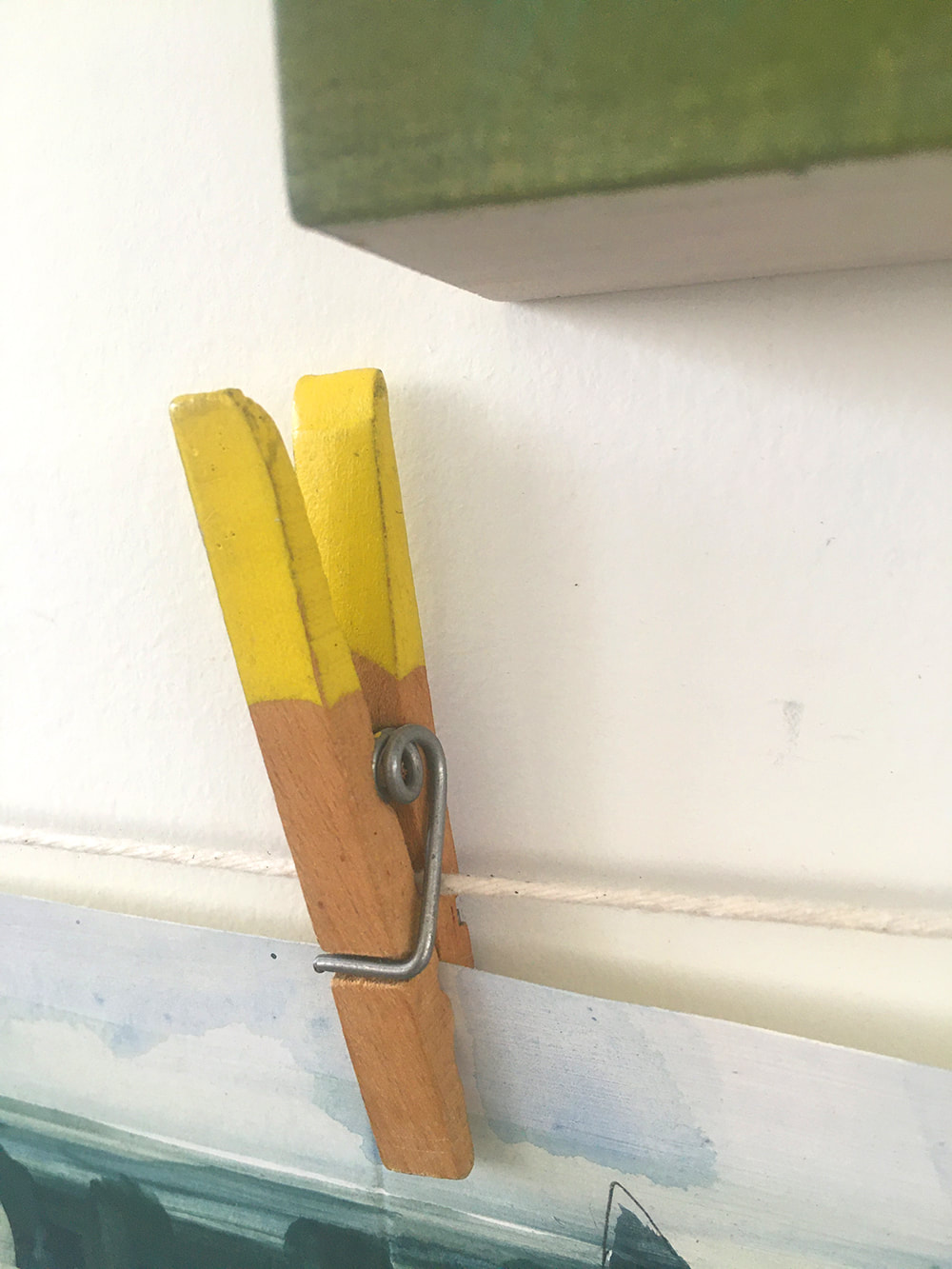
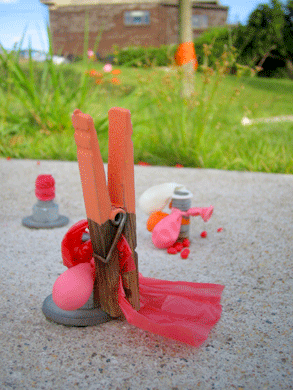
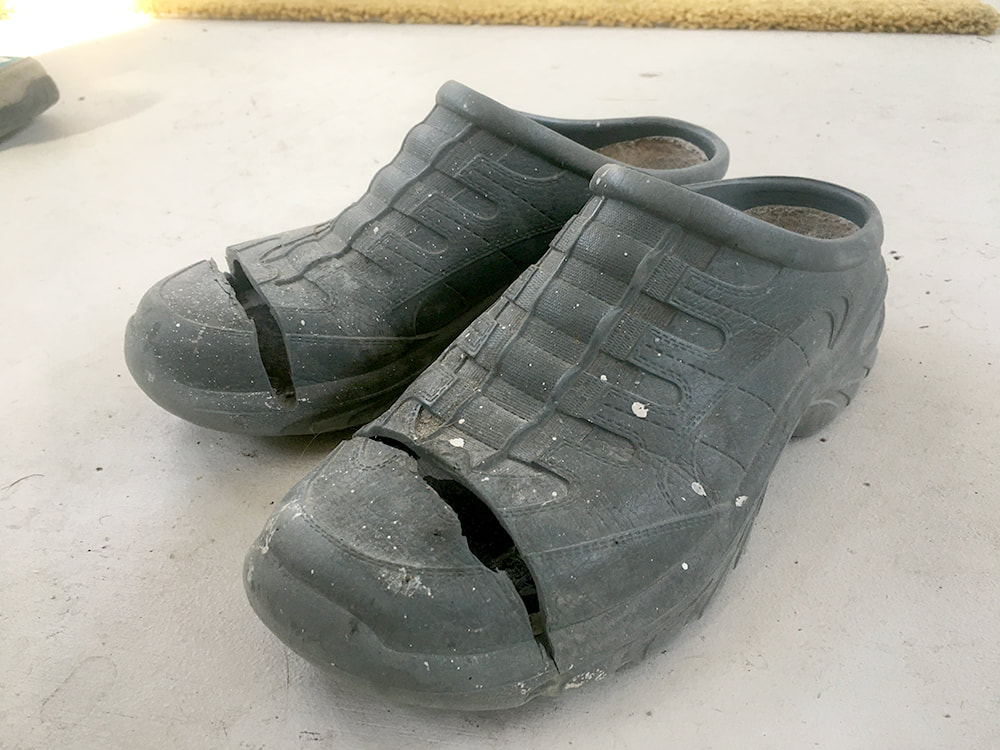
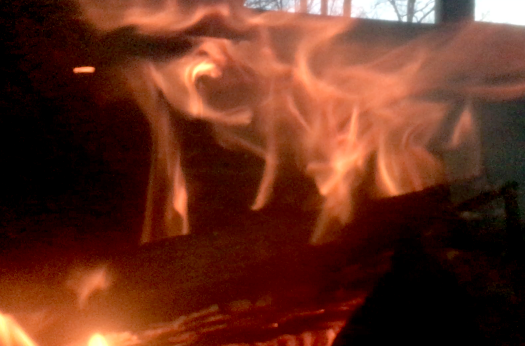
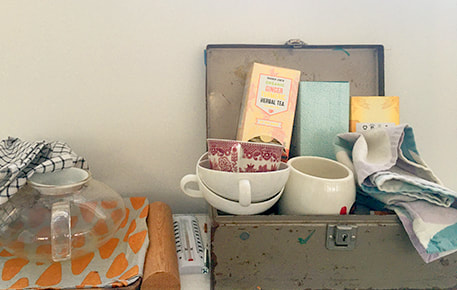
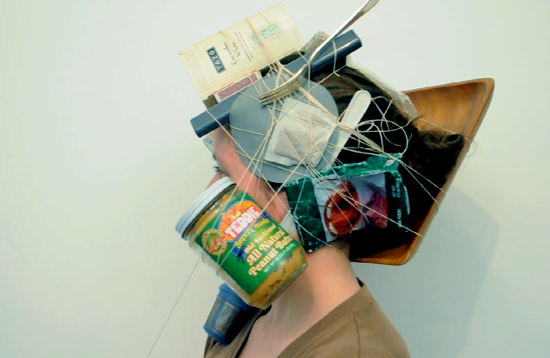
 RSS Feed
RSS Feed